Andrew Macarthy's Blog, page 12
July 29, 2018
How to Use Hashtags to Grow Your Business on Social Media (Tips and Best Practices for Facebook, Twitter, Instagram, LinkedIn, And YouTube)

How to Use Hashtags to Grow Your Business on Social Media (Tips and Best Practices for Facebook, Twitter, Instagram, LinkedIn, And YouTube)
Why Hashtags Are Important For Brands on Social Media
Hashtags on social media help to group conversations, give context to your message, and crucially - because using the"#" symbol in front of a word turns it into a clickable link - hashtags can help you and your content get found by your target audience. Clicking on a hashtag will take to a person to a list of posts containing the same hashtag.
Many brands use hashtags "just because", but adding them without purpose can one can at best weaken the message of a post, or at worst turn people off your brand completely.
In this blog post, I'll guide you through everything you need to know about hashtags and how to make the most of them on all of the biggest social media platforms. Read on for hashtag best practices, and how to best integrate hashtags into your social media marketing strategy.
The Three Main Types of Hashtags for BrandsThe type of hashtags you use on social media will depend on your business goals, but for brands they generally fall into one of three categories: branded, community, or campaign. Branded and community hashtags work best long-term, while campaign hashtags are best for short-term goals. Let's look at how they all work:

A branded hashtag is a hashtag that’s unique to your business. A branded hashtag can be as simple as your company name, slogan, or the name of one of your products. For example, Nike Football's Instagram account uses the hashtag #nikefootball.
Getting your followers to use your branded hashtag in their posts is key to getting discovered on social media. When your fans use it, it means they love your product or service and want to share it with others. Even better, when fans post images or videos using your branded hashtag, they can be a goldmine for curating influential user-generated content (UGC) to be used in your own future posts.
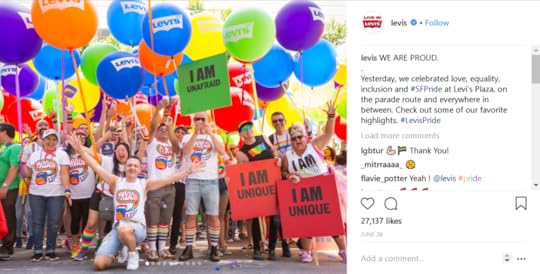
Community hashtags also enable brands to connect like-minded users around a specific subject. But unlike branded hashtags, community hashtags don’t have be directly related to a business — they can focus on a theme, feeling, or idea. For example, Levis jeans uses the hashtag #LevisPride to show its support for the LGBT community.

Campaign hashtags are usually short-term, lasting for just a few days, weeks, or months. This is because campaign hashtags are most often associated with specific campaigns, like a new product launch or a contest. For this reason, brands promote a campaign hashtag heavily to get as much activity as possible, and then stop promoting it once the campaign has finished. In the example above, Whole Earth Foods uses the hashtag #ManvHorse2018 to promote the fact that it was sponsoring the event, and to encourage fans to get involved.
Best Practices for Hashtags on Social Media
Identify your hashtag goals. Clearly identifying the goals you want to achieve from using a hashtag will give you the direction you need to successfully implement it as part of a short-term campaign or longer term initiative. Goals can range from creating brand buzz, to driving contest entries, to encouraging user-generated content.
Make it easy to remember — and spell. Don’t leave room for possible typos, which will make your hashtags hard for people to use. Also double check how it looks and reads. The last thing you want is to end up with an infamous hashtag fail, like one of a Swiss PR firm that was invented to promote the movie, The Hobbit - #hobbitch ("ch" being a country code).
Educate your audience. Make sure you clearly communicate the hashtag and more importantly, explain why a fan would want to include it in their own posts.
Be patient. If you've invented a brand-specific hashtag, chances are that your audience won't take to using it "organically", especially if you're using a brand slogan or other one-sided hashtags. A hashtag is meant to be inclusive, shareable, and discoverable. If it doesn’t organically fit within a post, it will come across as forced and lose its intended purpose.
Give people a reason to use your hashtag. The best hashtags have the ability to draw people in and invoke curiosity to explore and join in on the conversation. Whether it’s as part of contest entry or the fact you recognise hashtag users with a like or a comment, your audience will be more likely to use your hashtag when the relationship benefits you both.
Research your hashtag. Search and listen to see what hashtags people are already using when talking about your brand, and capitalise on those. Also check to ensure your desired hashtag isn't already being used. If so, can you use something else to dodge confusion? If you need inspiration, tools such as Hashtagify.me can help you to find relevant or trending hashtags based on your search.
Measure your results and adapt your strategy. It isn't often that a hashtag campaign reaches its full potential from the moment it launches. Measuring your results and adapting your campaign as needed is the best way to make sure you stay on track and deliver on the KPIs you set out to reach or improve.
Now you know what hashtags are and how the benefits they can have for businesses, let's look specifically at how best to put them to use on each of the biggest social networks, starting with... YouTube?! Yup.
How do YouTube Hashtags Work?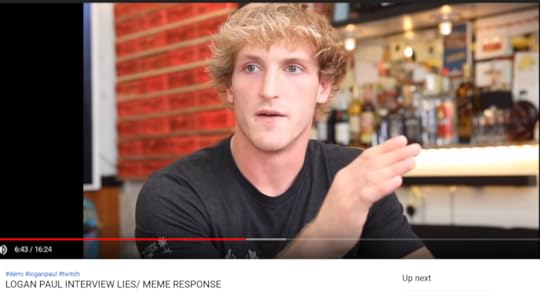
Hashtags are a relatively recent addition to YouTube's search and categorisation options, but could turn out to be a very handy option for brands and creators on the platform.
YouTube's search recognises hashtags as keywords, which means viewers can find your videos when they search for a specific hashtag. For hashtags to be made discoverable in search, you will need to add them to your video titles and descriptions.
Hashtags used in the title and description of a video will be hyperlinked, allowing users to click on them to explore more videos marked with the same hashtag.
So, as well as an eye-catching thumbnail, title, and description, to maxmise exposure for their videos, brands also need to consider hashtags as part of their YouTube strategy.
YouTube Hashtags Best Practices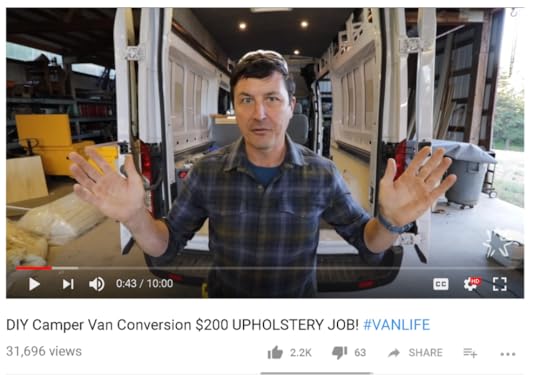
Up to three active hashtags can be used in a video title. The benefit of including hashtags in the video title is that they'll appear in the most prominent place, and in a large font.
If it makes sense, might want to use the hashtags as part of the video title, e.g. "First Review of the #Samsung #GalaxyS9."
If that looks a bit too messy for your liking (and it can tend to look that way if more than one hashtag is used), you could place them at the end of the main title to keep them separate, e.g. "First Review of the Samsung Galaxy S9 | #Samsung #GalaxyS9 #S9.
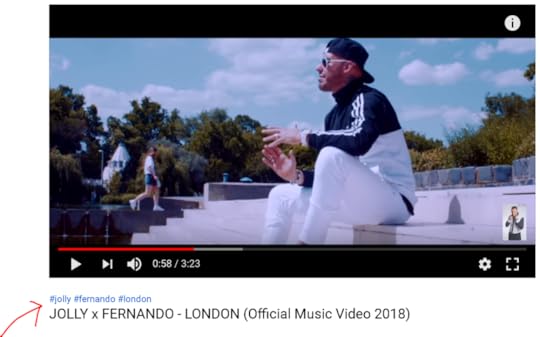
If there are no hashtags added to the video title, the first three hashtags written anywhere in the video description will display in a line above the video title. These hashtags will still be clickable, but appear in a smaller font than in-title hashtags.

All hashtags entered into the video description will be hyperlinked. It's then a case of deciding where you want to put them, based on how important they are to your campaign, and your audience. Hashtags will obviously have more visibility at the top of the description (in the section visible before a viewer has to click "Show More"), but stuffing a bunch of them there all willy-nilly, isn't the best solution.

All things considered, other than a couple of hashtags intrinsic to your brand and its mission - the ones that you want people to explore the most - I'd squirrel the rest away at the bottom of the description.
Note: If you're wondering why I can see ordinary tags at the bottom of the description, it's through a Chrome Extension called Tags For YouTube - great for inspiration and competitor analysis ;)
As well adding hashtags to new videos, don't forget to add them to old videos, too. Taking SEO into consideration, it probably isn't a good idea to mess with old video titles too much - especially if certain videos have performed well - but definitely think about adding hashtags to descriptions so that you can then have them appear above the video title.
How do Facebook Hashtags Work?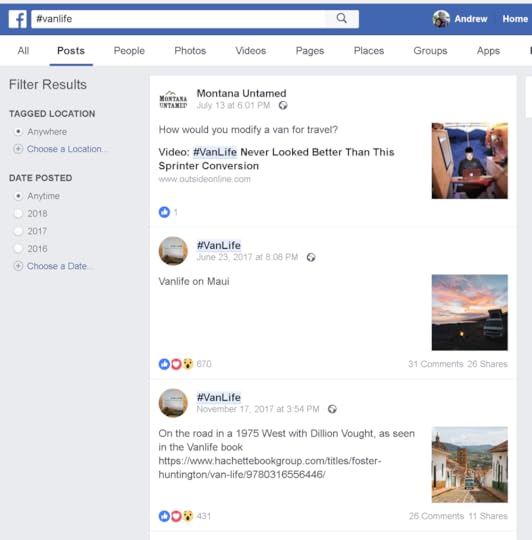
Although Facebook rolled out hashtags to the site in 2015, it has been relatively quiet in regard to how exactly they work and what brands should do to make the most of them.
Crucially, there is no concrete evidence to suggest whether or not hashtags significantly increase or decrease engagement, and brands are split over whether or not to use hashtags on the site.
What's more, the general consensus amongst marketers is that the ideal length of a Facebook post is between 40 and 80 characters. Knowing this - and with hashtags in mind - you won't have much room for them if your aim is to keep your statuses short and compact.
With this in mind, it's noticeable that brands who use hashtags on Facebook, do so with real purpose.
Facebook hashtags are useful from a search and exploration perspective; they group together content and conversations together. Facebook users can use hashtags to search for a bunch of posts about one particular topic, or else click on a hashtag within a post to view other posts tagged with the same keyword.
Facebook Hashtags Best PracticesIf you're a brand with your own unique and consistently-used hashtag, then mentioning it somewhere in your Facebook posts is probably a good idea. Fans will know that they can click on a hashtag to explore more of the same kind of content, which could work as a simple way to bring you more brand awareness.
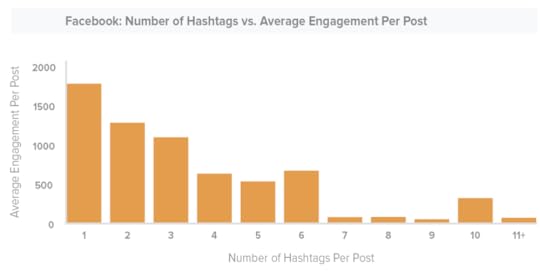
Given that most brands will be trying to keep the length Unlof Facebook copy to a minimum, using just one hashtag per post is a sound strategy. Research by Track Maven found that using a single hashtag in a Facebook post generated more engagement than using several.
As well as your own branded hashtags, so-called newjacking hashtags can be a powerful way to piggyback on widespread news events that are popular amongst your audience - and a way for people who haven't discovered your brand yet, to happen across it. Again, one - maximum two - hashtags is probably the best way to go here.
How do Hashtags on Twitter Work?
Like the sites above, hashtags on Twitter are used to categorise and group keywords or topics on Twitter. In fact, Twitter invented the whole concept of hashtags for this very purpose.
Hashtags can be included anywhere in a tweet, and clicking a hashtagged word in any message shows you other Tweets that include that hashtag. When hashtagged words become very popular, they often appear in the site's Trending Topics section. If this is the case, your hashtag will appear on the Twitter home page of users in the location where it is trending, giving it a ton more of exposure.
It's worth noting that the Trending Topics section is most often home to hashtags driven by large, public events, so securing a spot is an unlikely prospect for most brands. However, this ever-changing list is really useful for finding hashtags that your brand can implement in your own buzzworthy content.
Twitter Hashtags Best Practices
Lots of the strategies covered for other social networks above also work for Twitter (one or two hashtags is best, for example), but one of the most useful features of Twitter analytics is the option to view data on recurring trends. Find it under the Events section of your Twitter Analytics. Recurring trends gives you access to valuable stats on Tweet volume for commonly used hashtags – hashtags you can take advantage of to amplify your brand’s presence on Twitter.
When you're looking for the kind of regularly popular hashtag that can inspire action and engagement amongst your audience, instead of guessing which hashtags will be most relevant, Twitter's recurring trends breaks down each top hashtag by gender, age, and location talking about it. Using this information, you can accurately target your hashtag use based on the make-up of your followers.
How Do Instagram Hashtags Work?
Unlike all of the social networks mentioned above, hashtags tend to be used a lot more liberally (Instagram allows up to 30 hashtags to be used per post). In Instagram's case, using hashtags effectively can be one of the most powerful strategies for getting discovered to grow an audience on the platform.
Essentially, getting found on Instagram means using relevant hashtags in such a way that you give your posts the best chance of appearing in the social network's "Top Posts" section of its search results, along with all of the added exposure that this brings.
I've covered this topic extensively in the past, including a step-by-step guide for making the most of building your own Instagram hashtag strategy. Rather than repeat myself, click here to read it and learn everything you need to know.
How do LinkedIn Hashtags Work?
Like the social networks above, LinkedIn hashtags work as a way for individuals and brands to categorize and group specific topics. As well as being able to search for hashtags on LinkedIn, users can follow hashtags on topics they are interested, giving an incentive for you to create hashtagged content that users want to actively keep an eye on.
LinkedIn Hashtags Best Strategies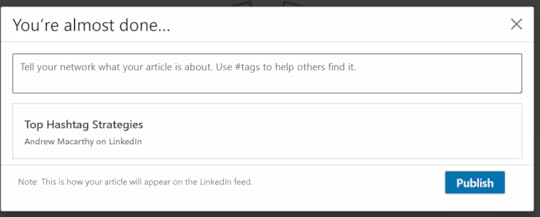
LinkedIn allows users to add hashtags to ordinary feed posts (it will suggest hashtags to you, or you can add your own), but interestingly, hashtags can also be added to LinkedIn Articles. Adding hashtags to the commentary about your article before you publish helps surface your article to users who may find it relevant. Editing your public profile settings to "Make my public profile visible to everyone" will enable anyone who searches for that hashtag to find your article.
To add a hashtag to your drafted article:
In the publishing tool, open your drafted article.Click Publish in the top right of the page and a pop-up window will appear.In the pop-up window, include content to introduce your article and relevant hashtags within the field Tell your network what your article is about. Use #tags to help others find it.Over to youDo you have a specific hashtag strategy for your brand? Will you be putting any of the hashtag strategies above to good use? Let me know in the comments below!

Andrew Macarthy is a social media consultant and the author of the #1 Amazon Web Marketing Bestseller, 500 Social Media Marketing Tips.
Buy 500 Social Media Marketing Tips
Amazon US: http://www.amazon.com/dp/B007L50HE6
Amazon UK: http://www.amazon.co.uk/dp/B007L50HE6
Follow Me:
http://www.facebook.com/500socialmediatips/
http://www.twitter.com/andrewmacarthy
http://www.pinterest.com/andrewmacarthy
June 21, 2018
The Complete Guide to Using Facebook Events to Promote Your Business (Best Practices and Strategies)
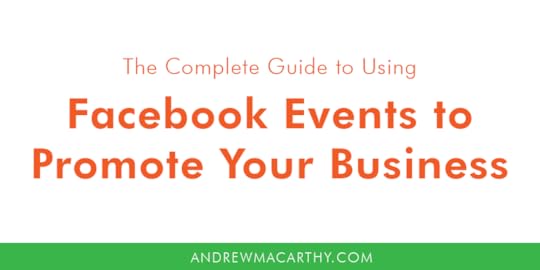
The Complete Guide to Using Facebook Events to Promote Your Business
With Facebook now strongly encouraging businesses to make the site somewhere that fans and customers gather to engage in tight-knit communities and meaningful conversations, Facebook Events has emerged as a highly valuable tool for marketers to spread awareness, attract new customers, and strengthen brand loyalty.
In this post, I'm going to explain everything you need to know about Facebook Events, and how to use them in the most effective way, first to boost attendance to the event, but ultimately to increase interest and long-term value for your business. First though, the basics:
What Are Facebook Events?Setting up a Facebook Event from your Page makes it easy for people to find your business' upcoming event, whether it's happening online or in the real worldwide. It could be a comedy night at your bar, a special sale to celebrate Thanksgiving, or the launch of a new product. Whatever the occasion,
Facebook says that 500 million people use Facebook Events each month to market their events, and 35 million people view a public event on Facebook each day. Events can be used to reach your audience, increase attendance, and build a stronger community around your brand.
How to Setup And Optimise A Facebook Event Post
To create a private or public event, select Create Event from the status box on your Page.
Alternatively, you can click the three little dots next to the Share button at the top of your Page and choose Create Event from the drop-down menu. On mobile, tap the "Event" icon at the top of your Page. Same result either way!
Note: You can also create an event specifically tailored to members of a Facebook Group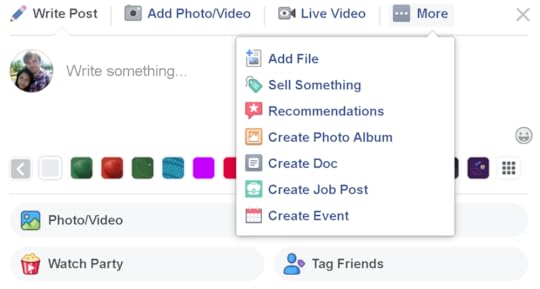
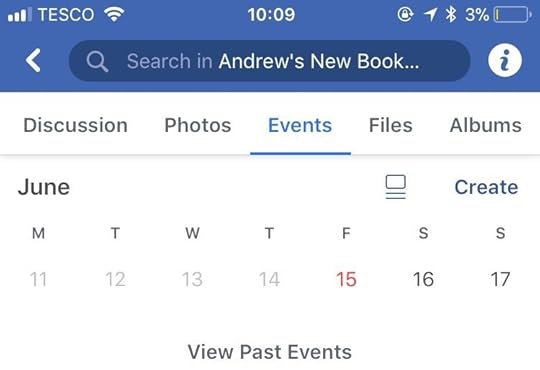
On Desktop, you'll find the Create Event option under the "More" section of the status update box in your Group. On mobile, visit the Events tab of your Group and hit "Create".
But we'll be focusing on Pages here, so it's time to start setting up your Event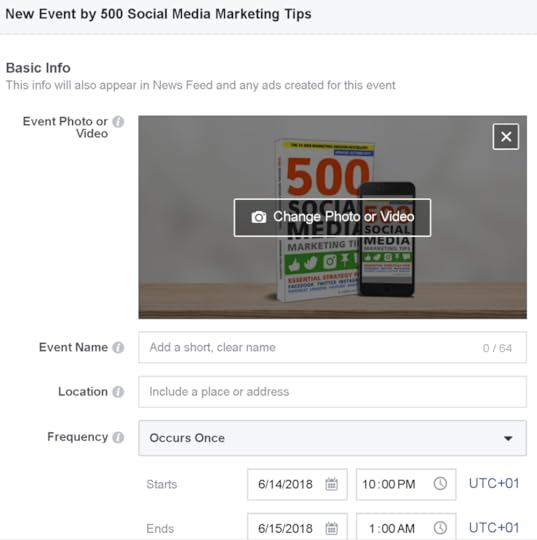
The first step is your Event photo or video. The optimum image size for Event cover photos is 1200 x 628 pixels, while videos can run anywhere from between 30 seconds and 5 minutes long.
Think of your Event photo as a visual ad for your event, as it's what will appear when the post is published and shared across the site - on your Page, in the News Feed, and in paid ads. Choose an image that will catch people's attention and cause people to stop in their tracks to check out what you've got planned.
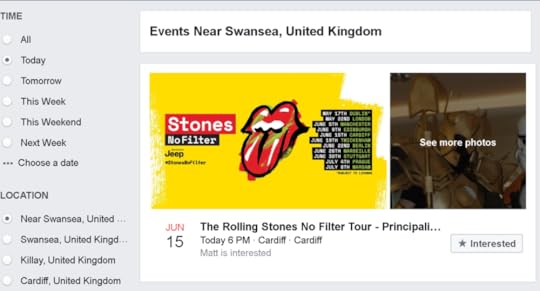
Once that's done, add:
The Event name: Use a clear and short event name. Long names can get cut off when viewed on different displays, so avoid duplicating location info in the name.The Event location: Facebook will generate a map to show attendees where to go. Use a location that corresponds to a Facebook Page or a Facebook-suggested location so people nearby can discover and learn about your event through suggestions. Adding an address will also mean that your event, when published, will appear in the Events Near Me section of the site so people in your vicinity can stumble across it when browsing events. A start and end date and time. For events lasting longer than two weeks, Facebook recommends creating separate events with their own time and location.Fill out and optimise your Event details
Once you've piqued someone's curiosity enough to view your Event page, use the Details section to tell them more about what they can expect, and to encourage their attendance. Adding relevant keywords allows Facebook share your event to the people who will most likely be interested in attending.
If you're selling tickets to your event, add your ticketing website link to the Ticket URL field. This makes it easy for people to buy tickets and unlocks the ability to create ads that can help drive ticket sales.
Check out how The Great Gin Festival uses its Details section to sell its event: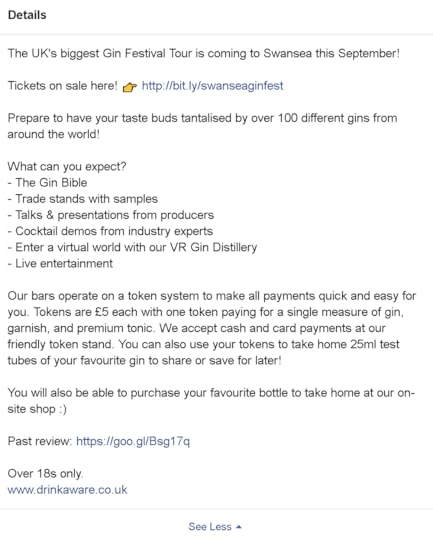
Some of the key details include:A reminder of the event name and location.A link to where people can buy tickets - in addition to Facebook's own "Buy ticket" button.A clever sentence to sum up the event and hype it at the same time - "Prepare to have your taste buds tantalised by over 100 gyns from around the world!"A bullet-pointed list to spell out what attendees can expect.Additional details to explain how the event works and satisfy any questions or objections that someone might have (token system, payment options, and past reviews etc.)
Some great ideas here for you to mirror in your own description. I would suggest adding another call to-action and ticket link at the bottom of your details, and also a suggestion that encourages readers to share the event with their friends.
Also, if you mention other people or Pages that will be appearing at your event, Use @mentions to tag them so people can learn more about them.

You can also use the Details section to let people know that they can comment in the discussion section with any further questions they might have, and that you'll get back to them with an answer ASAP.
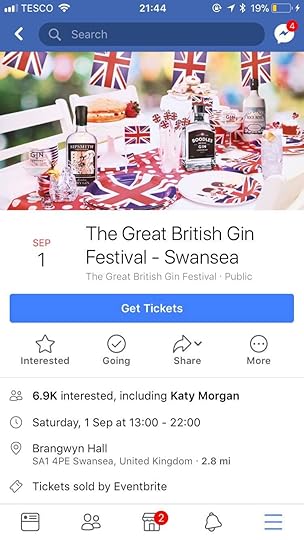
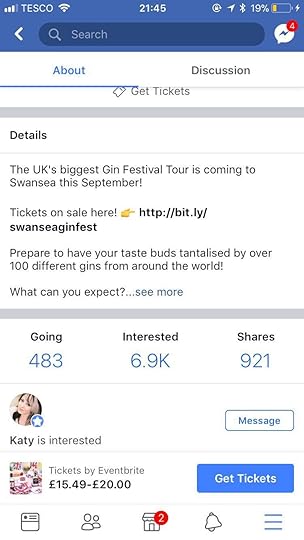
It's also worth noting that event details are condensed to show approximately the first 10 lines until a user clicks "see more" to read the rest, so try to include the most important information right at the top of your description.
Choose further options, promote by adding co-hosts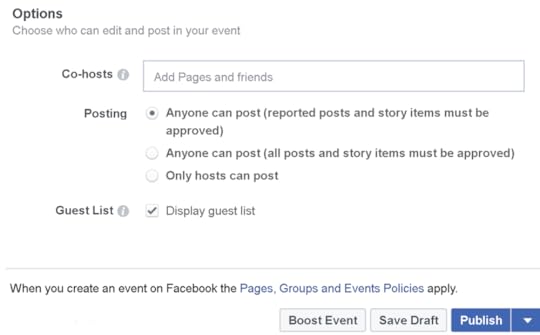
When you add friends or Pages as a Co-host to your event, they will be able to invite all of their friends and followers and the event will be added to their Facebook calendars, so it's a great way to help spread the word. Co-hosts could be the event venue, sponsors, performers, vendors, etc. When you've finished and you're happy, hit Publish.
Promoting your Facebook Event: Boost, Ads, and Frames
When your Event is created, Facebook will publish a Page post to promote the event and also add an Events section to your Page. Both give people the chance to see what you're organising, and give them the chance to indicate their interest or intention to attend.
Before we get into paid promotion, there are a three simple things that you can do to make your event as visible as possible to people who visit your Page:
1. Change the main design elements of your cover photo to promote your event.
In the example above, Swansea Summer Ball uses its cover photo to promote the event. The full image also displays the link at which to buy tickets, but - bit of a fail - it's cut off because the creator hasn't worked within the recommended cover size boundaries. But you get the idea!
The organisers have also added a "Book Now" call-to-action button beneath the cover photo, and even been updating their profile photo periodically to let people know how many tickets are left - a subtle FOMO (fear of missing out) form of marketing.
2. Pin your event post to the top of your Page to make it more visible to visitors.Click the three little dots next to the event post and choose "Pin to top of Page". Any subsequent Page posts will appear below it.
3. Re-order Page sections to place Events near the top.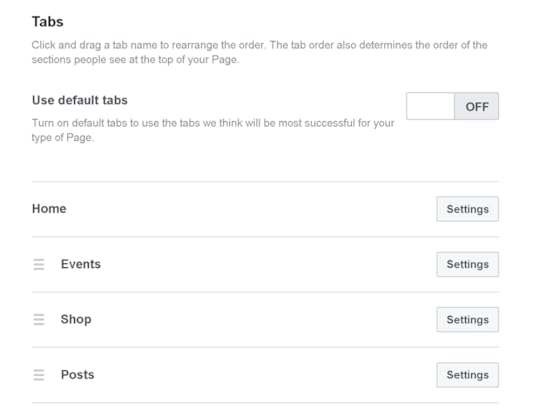
Visit Page Settings -> Edit Page and scroll down. Here, you'll see the option to drag-and-drop your Page's main tabs into whichever order you choose. For the duration of an Event's promotion, you may want to shift it to the top of the list so that it appears first to visitors on your Page.
Boost your Event Post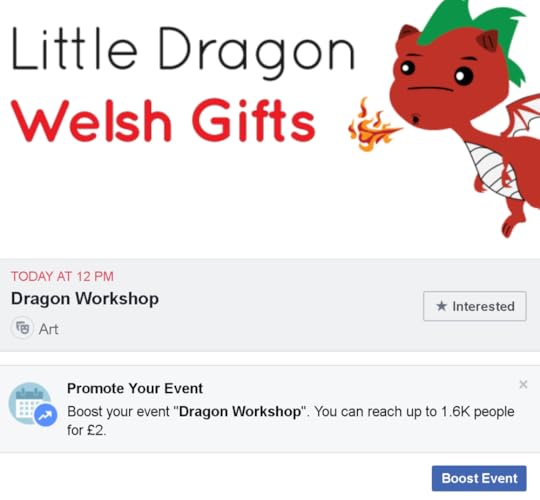
After you publish your Event, you'll be able to Boost its visibility through a button on the post, or within your Page's Events tab, turning the post into an ad. The options for boosting an Event are the same as for boosting an ordinary Page post, and you can choose either to Boost the post to raise Get Responses or direct people straight to your ticket website.
Click Boost Event from your event page or post.Choose Reach More People or Increase Ticker Sales.Select your audience. You can target people based on gender, age, location and interests. You can also target people – and their friends – who've liked your Page.Choose your budget and schedule.Click Boost.Promote your event through Facebook Ads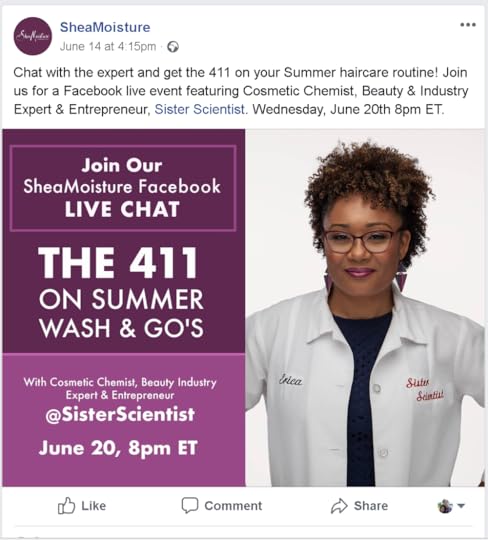
Facebook event ads can help you increase awareness, RSVPs and ticket sales for your event on Facebook. With event ads, you can target people who might be interested in your event and re-target people who've shown interest in the past.
To begin to create an event ad,click the three dots next to the Share button on your Event page, and choose Sell More Tickets.
Choose your Event ad objectiveOnce you've created a Facebook event, you can create an event ad when you choose the Traffic, Engagement or Conversions objectives in Ads Manager. The call to action button on your event ad will either say Interested or Get Tickets depending on your objective. Choose the objective that best matches your goals.
The Traffic objective helps to drive clicks to your website or app to sell tickets. Creating event ads with this objective will show an Get Tickets button to people who see your ad.
The Engagement objective helps to get more RSVPs for your event. Creating event ads with this objective will show an Interested button to people who see your ad.
The Conversions objective helps to increase ticket sales that occur on Facebook. Creating event ads with this objective will show an Get Tickets button to people who see your ad.
Design your Event adThe way you design the image or video you use for your Event ad should follow the same best practices as your Event cover image. Remember to keep any image text to a minimum (Facebook limits the distribution of ad images with text that covers more than 20% of the image). You may also want to run A/B tests on the ad image and text, to determine which ad your target audience responds to best.
Target your Event adOther than the traditional target audience parameters that you can select in Facebook Ads (location, age, gender, interests, etc.), there are three arguably more powerful ways to find an audience for your event and make the most of your ad budget. Here's an overview:
Create an Event Custom Audience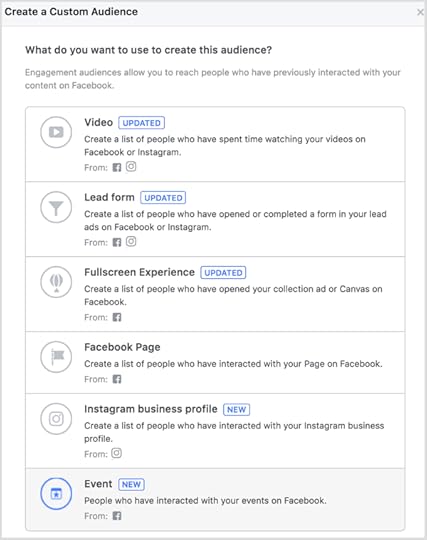
You can connect with people who show active interest in attending your events by creating an Event Custom Audience. You can include or exclude people who have responded Interested or Going to any event on your Page.
To create an Event Custom Audience of people who've engaged with events on your page:
Go to your Audiences in Facebook Ads.Click the Create Audience dropdown and choose Custom Audience. Click Engagement.Click Event.Click the dropdown and choose the option you want to use in your audience. Depending on your event and whether you work with a Facebook ticketing partner to sell tickets, you might have these options:- People who have responded Going or Interested
- People who have responded Going
- People who have responded Interested
- People who have visited the event page
- People who have liked, shared or commented on the event page
- People who have engaged with the ticketed events on Facebook and either purchased or didn't purchase tickets
- People who have purchased tickets on Facebook
- People who didn't purchase tickets on Facebook
Fill out the in the past field with the number of days you want to go back to find people who interacted with your event for inclusion in your audience. You can go back up to 365 days.
Click the Page dropdown and select the Page that has the event you want to use to create your audience. Click +Select specific event(s) to easily search your events. Optionally, click Include More and Exclude to add more criteria to your audience. Optionally, add an audience name and description. Click Create Audience.
Your audience will start building and might take up to 24 hours to complete depending on the time frame you chose.
Use Lookalike Audiences
`
Use Ads Manager to upload a list of people from email lists or a list of people who have bought tickets in the past. Facebook will use this information to target similar people based on their Facebook data and browsing history.
Create a Facebook Lookalike Audience:
Go to Audiences under the Assets section of Facebook Ads Manager.Click the Create Audience button and choose Lookalike Audience.Choose your source, including people who have liked your Page, interacted with your content, your email list, etc.Choose the country/countries where you'd like to find a similar set of people.Choose your desired audience size with the slider, and click Create Audience.Use your Connections
Target people and their friends who've responded to your event or any event from your Page by using the Connections field when creating your ad. You can also exclude people who've already responded to your event.
In the Audience section of your ad details, click the Connections drop-down that says Add a connection type.Choose Events and then choose People who responded to your event.Click Save This Audience.Fill out the rest of your ad details and click Continue to keep creating your ad. Click Confirm when you're done.Create a Facebook event frame for fans and attendees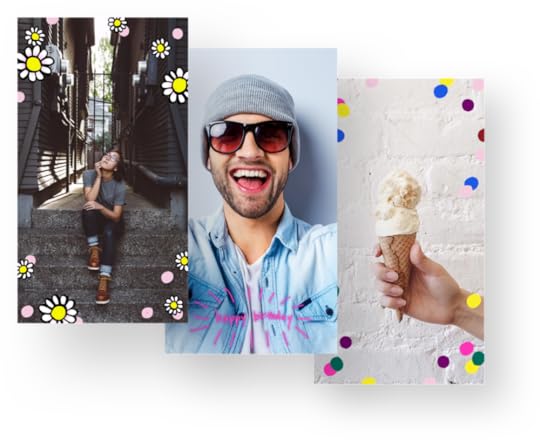
As well as using ads to promote an event events created via a Facebook Page, you can use Facebook event frames to use the goodwill of fans to help promote it for you. Event frames are profile and page photo overlays that your attendees can use to showcase the event to their friends, followers, and fans.

To begin creating an event frame, use Facebook Frame Studio in the Camera Effects Platform (https://www.facebook.com/fbcameraeffects/)
Driving Leads During And After your Event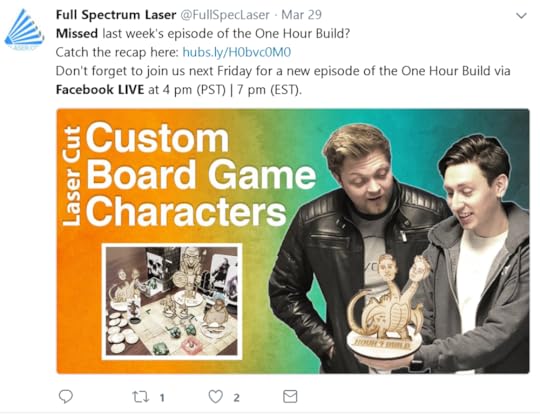
Promoting your event and business doesn't stop after the run-up to it and its launch. There are plenty of ways that you can use the event itself - and the immediate period of time afterwards - to gather leads and build brand awareness·
If your event is ticketed, you can offer tickets (including free ones) through a service like Eventbrite to register attendees for your online or offline event. Anyone who purchases a ticket becomes a part of an exportable list of contacts that you can use as a lead. An additional way to capture leads using your Facebook events is to create lead ads and ads for the lead generation pages on your website. Target your ads to an audience of people who responded to your Facebook event.·Stream live from your Facebook event to encourage viewers to attend or to show them what they’re missing out on. In the Facebook mobile app, go to your Facebook event. Tap the status update box and look for the Go Live option.·Keep the magic of your event alive until the next one arrives. After it’s over, thank attendees on the event page and remind them when the next event will take place. Encourage attendees to share their favourite stories, photos, and videos on the Facebook Event page and their own profiles. Of course, you can do the same on your own Page.·Use the Event’s page to promote your Facebook group, so that event attendees can join to network with other event attendees, organisers, speakers, and sponsors in a more permanent location.·Facebook event attendees (or those who engaged with your event page) can be used as part of a target audiences in future Facebook ad campaigns, meaning that you can promote your business’ products, services, or future events to those who engaged with your Event page.Note: Page admins can easily repeat a Facebook event with the Create Repeat Event option in the drop-down box on your Event page. In addition, to prevent the need to invite fans to events within their area, you can invite them to subscribe. When a fan subscribes they will automatically be notified when your event is in their locality – ask them to subscribe by clicking on “Events” below your Page’s cover photo and hitting Subscribe.
Over to youDoes your business make use of Facebook Events? Will you be putting any of the strategies in this post to use for your own brand? Are there any key strategies that I have missed? Let me know in the comments below!

Andrew Macarthy is a social media consultant and the author of the #1 Amazon Web Marketing Bestseller, 500 Social Media Marketing Tips.
Buy 500 Social Media Marketing Tips
Amazon US: http://www.amazon.com/dp/B007L50HE6
Amazon UK: http://www.amazon.co.uk/dp/B007L50HE6
Follow Me:
http://www.facebook.com/500socialmediatips/
http://www.twitter.com/andrewmacarthy
http://www.pinterest.com/andrewmacarthy

May 24, 2018
The News Feed Is Dying: How to Drive Facebook Fans Directly to Your Page
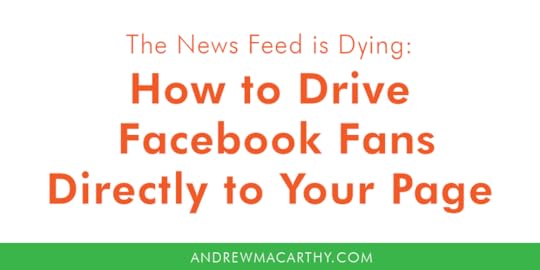
The News Feed Is Dying: How to Drive Facebook Fans Directly to Your Page
Warning: If you want your brand to get noticed and succeed on Facebook, you have to stop relying on the News Feed.
In this blog post I’m going to explain why, and what you need to do to stand out from the crowd and continue to generate business through Facebook.
First, a bit of background:
It's no great surprise to marketers that organic Facebook reach for Pages has been declining for years - due to a variety of factors - including increased competition amongst brands, and a deliberate squeeze by Facebook that encourages you to spend on ads in order to be seen.
However, in the last six months, Facebook has announced a significant shift in the way it wants the site to operate - one which affects Page owners more than ever.
It means that brands must now totally rethink how they approach their marketing efforts on the site. Here's a quick overview to bring you up to speed:
Back in January, Facebook founder, Mark Zuckerberg, outlined his vision for the future of Facebook on his Page:
In essence, posts from brands and businesses were cluttering up the News Feed and users were growing tired of it. This resulted in a move that prioritised News Feed posts from friends and family over those of Pages. The hope? That people would share and interact more meaningfully on Facebook, and spend more time on the site.
And in a more recent update, Facebook posted the following update to its developer blog:
"The `publish_actions` permission will be deprecated. This permission granted apps access to publish posts to Facebook as the logged in user. Apps created from today onwards will not have access to this permission. Apps created before today that have been previously approved to request `publish_actions` can continue to do so until August 1, 2018."
In layman's terms, this change means that developers won't (as is the case on Instagram) be able to post content on behalf of personal Facebook profiles. So, now developers can only post to business profiles and pages on both Facebook and Instagram.
What do brands need to do to adapt?Facebook wants users to interact with its products in a manual, deliberate way — whether that is posting content, consuming content or engaging with content.
Where brands are concerned, this means that your goal is to create content that will foster a community that is thriving with genuine fans and genuine interactions - and keeps them coming directly to you, without needing to work hard to grab their attention in a cluttered News Feed whose algorithm is always working against you.
Let's look at a five strategies of how to attract engaged fans directly to your Facebook content without having to rely on the News Feed, along with some pointers to maximise the impact of each:
1. Broadcast Live ShowsKerensa and Brandon from RV to Freedom host weekly (sometimes bi-weekly) live broadcasts on their Facebook Page, discussing everything about living life on the road, and how others can follow in their footsteps.
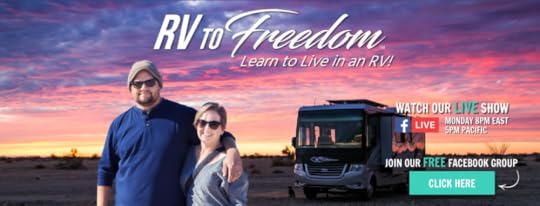
Here are some of the steps that the couple take to make their live shows a destination point for their Page:
Broadcast live at the same time each week.Encourage fans to click link to receive a notification to remind them when the show goes live.Promote the live show in their Facebook cover photo and in Instagram posts.Discuss the live show in their closed Facebook group, and encourage people to join in.Promote next week's live show at the end of each broadcast.2. Host A Special PromotionThe Daily Cafe is a hub of information and a community for school teachers. To celebrate Teacher Appreciation Week, it hosted a giveaway on its Facebook Page every day from Monday to Friday.
Everyone loves the chance to win prizes, so here's why a daily or weekly promotion can become a destination point for their Page:
Winners are announced in a post on the Page. Asking the winning fan to get in touch to claim their prize ensures that they visit to check if they have won.With a giveaway every day, fans know that if they don't win one day, they can return the day after to try again.3. Host A Daily Question or PollGenerating conversation on your Page needn't be an elaborate exercise. Something as simple as a daily question in the form of a poll can be enough to generate discussion. Obviously, you'll want to centre it around a topic that your audience is passionate about, and encourage them to elaborate on their poll choice in the comments selection below it.
4. Start a Facebook Group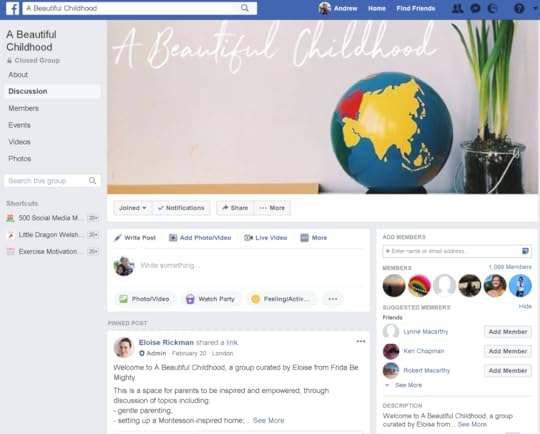
One guaranteed way to encourage Facebook users to keep returning to content and to join in with meaningful discussions around your brand, is inviting them to join your own Facebook group. Unlike News Feed or Page posts that come and go in no time, group topics and discussions are much "stickier," they can be used to cultivate connections and to build a sense of community, both between you and your fans, and fans between each other.
The group, A Beautiful Childhood, is curated by Eloise Rickman, author of the blog, Frida Be Mighty. It is described as "a place for us to discuss raising our children, and forging for them a childhood that is gentle, slow, and beautiful."
Some of the strategies that Rickman uses to create a growing and thriving group include:
A pinned post to explain the purpose of the group in more detail, along with suggestions for topics to be discussed, a short overview of group rules, and a plug for Rickman's website.Runs a monthly book club to engage fans and encourage discussions.Hosts live broadcasts that cover various parenting issues, and encourages group members to watch to discuss and answer questions.Shares links to articles and stories that group members may find interesting.Promotes new blog posts and her own paid courses.Facebook groups not only provide a hub for your audience to interact with you and other like-minded people, but can also be used to gather invaluable customer insights (via group analytics) to help in developing new content, products, and promotions.
5. Think About Storiesif your content marketing extends to Instagram, no doubt you'll be familiar with Stories - which are now also available on personal Facebook profiles. While they're not available to Facebook Pages just yet, my best guess is that it is only a matter of time before we see the feature rolling out.
And here's why they're so critical. When someone posts a story, its existence is marked prominently at the top of the Facebook and Instagram apps - that big circular profile photo, with a gleaming ring around it that is irresistible not to touch. No need to rely on the crowded News Feed to show off your content - it's right there for users - and the content, when displayed, is full-screen, free from other distractions while it is being consumed. Stories allow fans to tap through to links, send a direct message, can function as paid ads, and more.
So, if you're not yet thinking about Stories in any capacity, then now is probably a really great time to start.
Over to youWhat do you think about Facebook's recent changes? Do you think the News Feed is dying, too, and brands need to opt for more creative ways to draw fans back to them on Facebook? Let me know in the comments below!

Andrew Macarthy is a social media consultant and the author of the #1 Amazon Web Marketing Bestseller, 500 Social Media Marketing Tips.
Buy 500 Social Media Marketing Tips
Amazon US: http://www.amazon.com/dp/B007L50HE6
Amazon UK: http://www.amazon.co.uk/dp/B007L50HE6
Follow Me:
http://www.facebook.com/500socialmediatips/
http://www.pinterest.com/andrewmacarthy
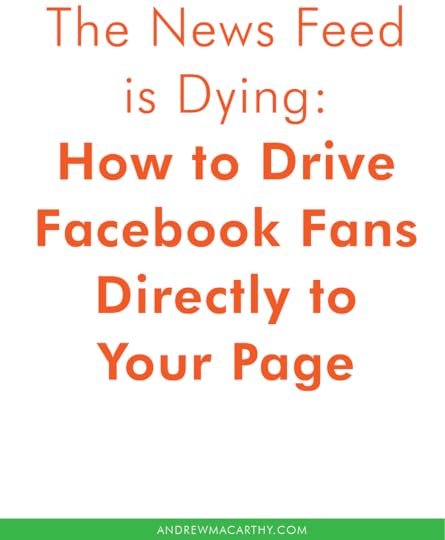
The News Feed Is Dying: How to Drive Facebook Fans Directly to Your Page
April 20, 2018
Instagram Stories Ads: 9 Essential Tips to Drive More Sales (With Examples)
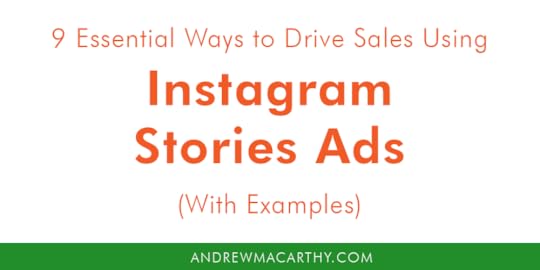
Instagram Stories Ads: 9 Essential Tips to Drive More Sales (With Examples)
Are you a business wanting to use Instagram Stories ads to build awareness of your brand or drive more sales of a product?
In this post, I will be sharing with you 9 of the best strategies to create and optimise Instagram Stories ads that resonate with highly-engaged Instagram users. Skip down if you're hungry for the advice right now, or if you need a bit of background information first, let's start with the Stories ads basics:
What are Instagram Stories ads?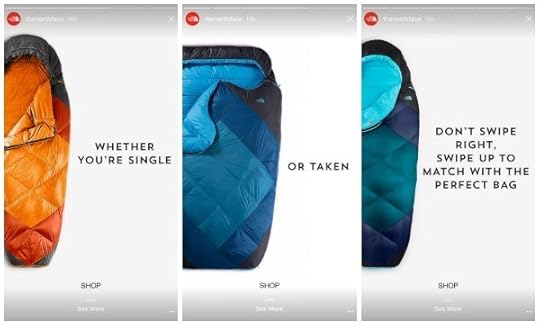
Instagram Stories Ads allow you to insert a short ad - either a static image displayed for up to 5 seconds, a carousel ad with 2 or more images, or a video of up to 15 seconds long - between stories that people watch within the app.
Because Stories ads don't appear in the News Feed and pop up instantly while they’re viewing their story posts, they're a direct way to put your brand in front of potential customers. Like ordinary stories, Stories ads disappear forever after 24 hours. Instagram Stories ads is a much more private experience for people -much more than other social platforms, or, for that matter, the main Instagram feed.
Instagram says that of the 300 million accounts using Instagram Stories, one third of the most viewed stories are made by businesses, and one in five stories prompts a direct message from viewers. Stories ads can be used to target various business objectives, from brand awareness to website sales.
Note: Instagram Stories Ads are available for any Instagram account with a business profile. So, if you're interesting in experimenting with them but only have a personal profile, either set a new one up or convert your existing profile to a Business one via Settings in the Instagram app.
What does a great Instagram Stories ad look like?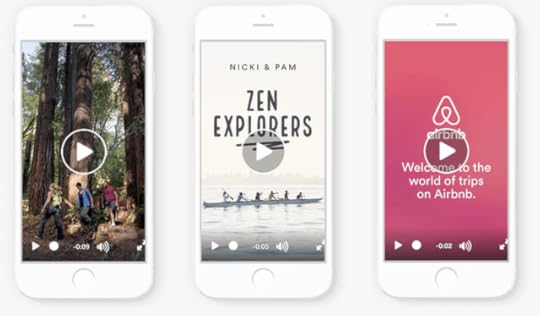
Unlike regular Instagram Ads, Stories ads only play once. After it’s over, users can’t tap back to view it again, so you need to make enough of an impression for them to have either converted, visited your site, or at the very least, remembered your brand’s name to come looking for you.
What's more, like any Instagram Story, Story Ads can be skipped with a simple tap on the screen. In order to get your audience to engage, you’ll need to learn create a compelling and attention-grabbing ad that does three things:
Grabs the viewer's attention with strong visuals.Engages the viewer with clear messaging.Spurs the viewer into action (like tapping through to your website.)I'll explain plenty of ways to help you do these things later on in this post!
4 ways brands can use Instagram Stories ads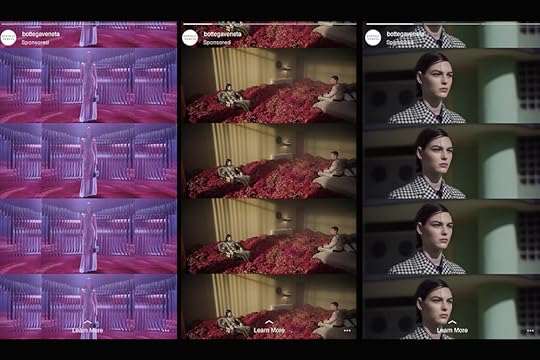
Instagram Stories Ads can be utilised by brands in a whole variety of ways. You could use them to:
1. Drive Brand and Product Awareness
If you're launching a new product or looking to break into a new market, Instagram Stories Ads offer an easy way to introduce your product to potential customers.
2. Announce Sales or Special Events
If your business has a sale or special event coming up, let your customers know with a Stories Ad! The format now offers interactive calls-to-action, so customers can swipe up and jump straight to your online store to start buying.
3. Start A Conversation
Prompt users to create and share their own content by starting an online dialogue with them. Ask them a question, throw down a challenge – anything to get them talking and sharing your brand with their followers. Alternatively, prompt your users to open a Messenger Chat with you - especially useful for companies that offer consulting services or sell big-ticket products that require a sales call.
4. Re-target Customers
Since Instagram is linked to Facebook, you can use Stories ads to set up re-targeting campaigns based on behaviour tracked with a Facebook website Pixel. Re-targeting is a key way for online sellers and service providers to boost marketing ROI and you shouldn’t leave Instagram out of that equation.
Additional ideas for how advertisers can use stories include interactive tours, teasers, interviews, breaking news, interviews, and showing behind-the-scenes-footage.
How to set up Instagram stories adsLike most ads on Instagram, you can use Facebook's Ads Manager to set them up. To start, navigate to Ads Manager and click Create Ad.
To enable the option to use Instagram Stories ads, choose either the Reach, Video Views, Traffic, Conversions, or App Installs objective.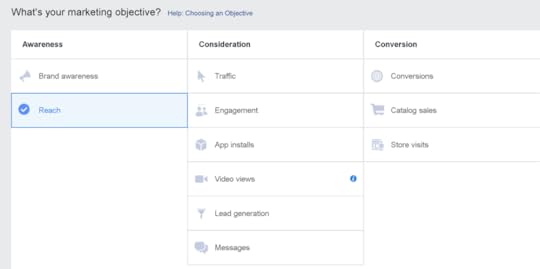
At the ad set level, choose the audience for your ad as normal. Then, select the Edit Placements option. Expand the Instagram placement selector and select Instagram Stories.

Then, as for any other ad, set the budget, schedule, and bid amount. Click Continue to view the options at the ad level.
Next, upload a single 9:16 photo or video for your Instagram story.
The full-screen dimensions for Stories Ads is different from anything on Facebook. Here at the recommended specs:
Recommended resolution is 1080 x 1920.Minimum resolution is 600 x 1067.Aspect ratio is 9:16.Max file size is 4GB.Recommended video formats are .MP4 and .MOV.Video length max is 15 seconds.Follow the rest of the steps to complete your ad, then preview your ad on the right. To finish, click Confirm and place your order.
9 Instagram Stories Ads Tips and Strategies
Now that you know what Instagram Stories Ads are, and how they can benefit your business, let's look at a variety of creative strategies that you can use to ensure your ads are as effective as possible.
1. Grab viewers' attention straight away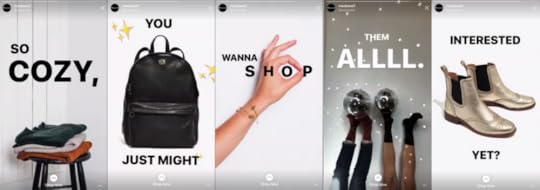
Whether your Instagram Stories ad is an image or a video, the initial second needs to be attention-grabbing so that viewers stop to view it while tapping through their stories.
Off-the-wall creative might look nice, but the key element of a good advertising video is to showcase what the actual product or service is. If a viewer starts watching your 15-second video and can’t figure out what it is you’re actually selling straight away, why would they keep watching and follow your call-to-action?
Research by Facebook shows that Instagram Stories ads that showed the advertised product in use performed better on key metrics (like understanding and purchase intent) than those that did not.
Note: While you can use text overlays on Stories ads that are images, if you use video instead, you are not allowed to use any supporting sales copy, titles, etc. Your video needs to be 100% self explanatory.
2. Keep your message simple; leverage the intimacy of Stories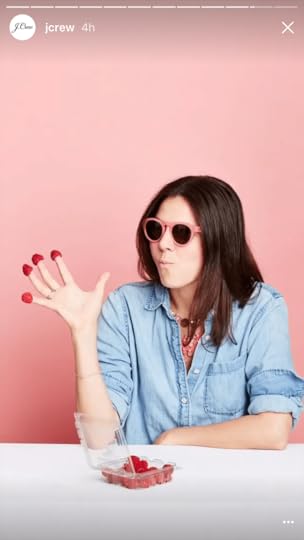
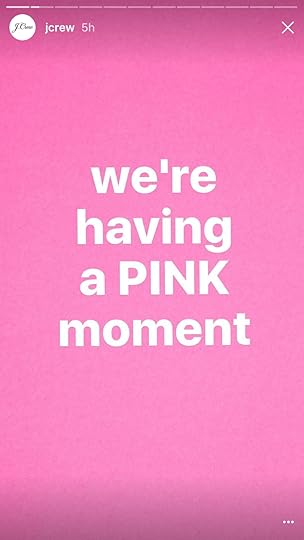
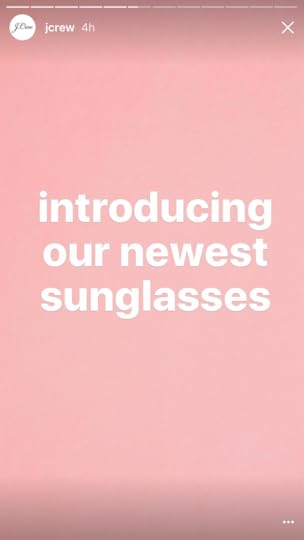

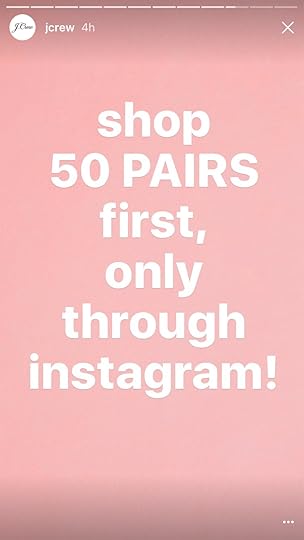

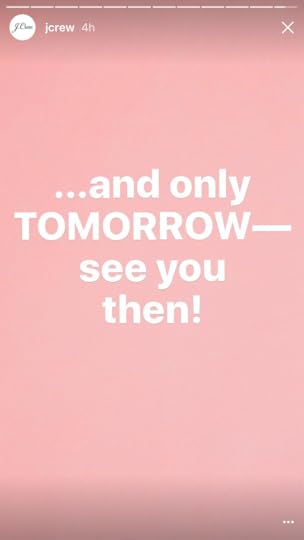
Remember, Instagram Stories ads give you a maximum of 15 seconds to make your point, so you can’t go for something too clever or just too complex. Keep your ad concept and message simple, to avoid viewers being confused or tapping away.
Unlike most other ad formats, Stories ads give you a full-screen opportunity to speak to your audience directly, a rare and powerful intimacy by which to deliver your message. With such an opportunity, it’s not all big budget and production; focus on telling relevant stories and thoughtfully crafting them to take advantage of the format.
3. Show your brand name but avoid these placements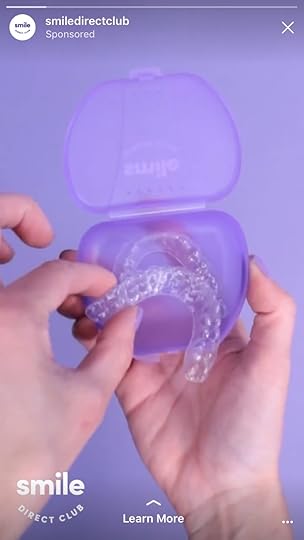
People tap through Instagram stories quickly, and as the first pointer demonstrates, will lose interest unless you grab their attention straight way. Once you do, you want to ensure that they know who you are - show off your brand name. To make it visible, you could employ tactics like overlaying your logo in a predominant fashion, or starting your video off by focusing on your product. Facebook found that top-performing Stories ads contained branding early on.
Avoid placing any text in the top-left of the ad. This header area is where people's handles always appear and persists for the viewing duration, so make sure you preview your ad in Ads Manager to ensure it looks right.
In addition, the “Swipe Up” text for your call-to-action will take up the very bottom and centre of your screen, so don’t place any important content (including branding or text) there.
4. Mirror the expected user experience - don't look like an ad!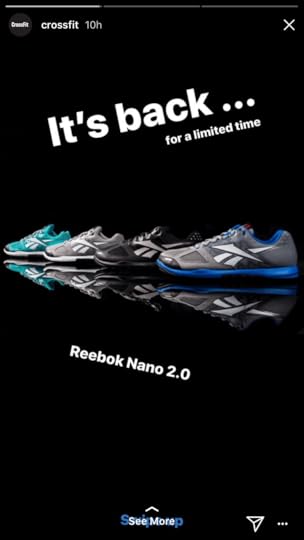
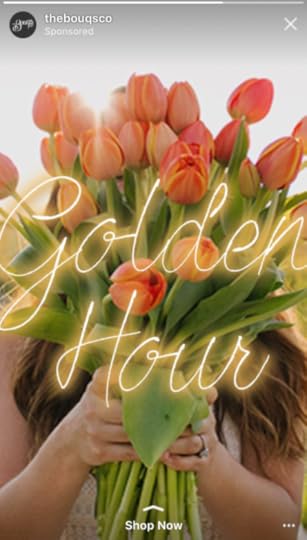
When it comes to Instagram Stories ads, “skip swipe” is one of its most challenging aspects, Alec McNayr of Fullscreen told AListDaily, as users are hypersensitive and can tell the difference between a friend’s amateur work and a carefully-curated ad made by a brand. The key, he said is to advertise while not looking like an ad. A key way to achieve this is to mirror the expectations of Instagram users as they watch Stories.
For example, a large proportion of organic Instagram Stories feature real people in real life scenes, so video could be the best option overall. Static image ads with graphics break up the user experience when they appear between story segments. Ideally, your ad should fit as seamlessly as possible within a story. If a static image doesn't match the aesthetic of what people expect to see in Stories, it will really stand out as an ad, and potentially put people off.
When you’re brainstorming your story ad ideas, think about user experience. What would they expect to see? Make sure you create ads that don’t divert too much from that experience. Using the photo editing tools from within Stories or mimicking them if you create ads in other tools, is a good way to go.
In addition to the basic format of your video, experiment with other creative techniques to make your Story ads more authentic. Introduce elements like emojis, handwriting, and stickers to keep your audience engaged. Play around with native Instagram tools like Boomerang, Hyperlapse and Superzoom.
5. Optimise your call-to-action to drive action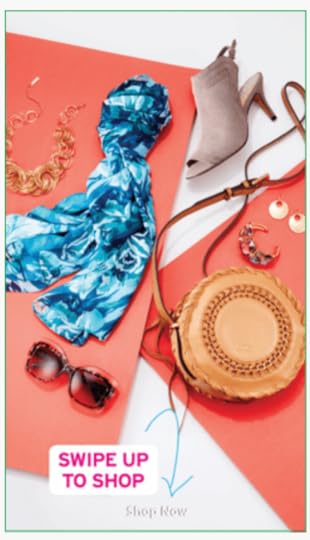
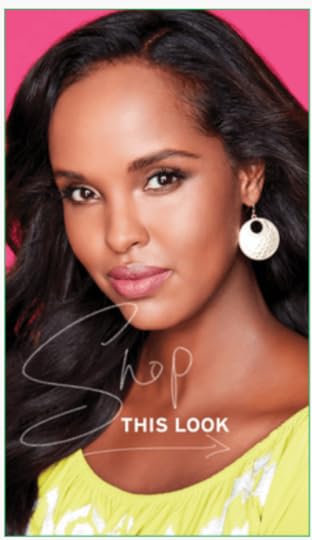
Make sure that your Stories ads include a clear call to action that encourages people to swipe up to perform an action, like visit your website. To make swiping up even more appealing, use interactive elements like arrows, stickers, and action-orientated copy to tell viewers what you want them to do.
Today's Shopping Choice created a highly experiential campaign to test the effectiveness of Instagram Stories ads. It found that:
Creative that included a call-to-action had an 65% lower cost-per-sale than creative that simply used the native Instagram call-to-action.Overlaying text on top of the creative drove an 47% lower cost-per-sale than images not containing any text.Here's another crucial strategy for your call-to-action. Use the last few seconds of your ad's visible duration to focus on the CTA. This two or three seconds lets the user know that the ad is over and it gives them time to take action. If the video just ends abruptly, or the CTA blends with existing on-screen action, they might miss their chance to swipe up.
6. Re-purpose existing content for Stories ads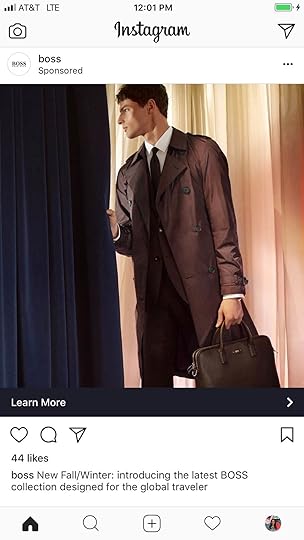

Before you go all-in with Stories ads, start off by re-purposing existing content created for your social media marketing campaigns. After all, you don’t want to waste your time and effort on a brand new Stories ad, only to discover that it doesn’t work for your audience.
To make re-purposing existing content easier - specifically that not already designed and formatted for Stories - Facebook's Ad Manager provides full-screen support for all ads in Instagram Stories. In essence, when you upload Instagram Feed creative within Ads Manager, it will be transformed into the full-screen format of Stories, allowing you to run Stories ads easily across Instagram:
Ad Manager's pixel-matching technology will automatically select a background gradient to turn the ad into a full-screen format.If the ad creative is square or landscape, the text from the Instagram Feed or Facebook Feed unit will be added in Stories text font below the photo or video. Swipe up capabilities will also be available so that you can add a destination link to your Stories Ad.See the two images above for how the conversion of an ordinary Instagram post into one that fits the Stories ad format might look.
7. Make your Stories fast-pacedFor ads containing more than one scene or clip, edits to make the video fast-paced make for better ads. Facebook found that top-performing Stories ads, on average, included brief clips with quick scenes.
8. Use audio to your advantageInstagram's research shows that 60% of stories are viewed with sound on, so make sure that the content you share sounds as good as it looks.
9. Measure, experiment, and re-targetLike all social media marketing advertising, chances are you won't hit it out of the park with Instagram Stories ads on your first attempt. Keep a close eye on your key metrics, both within the Instagram app and in Facebook Ads Manager, then tweak your ad elements to see how performance is affected.
Good to know: Instagram stories ads use the same targeting and measurement tools as Facebook and Instagram. For example, you can re-target audiences who have seen your ad between stories with another ad on Facebook or Instagram. You can also do the reverse — create ads in stories that are targeted to people who have seen your Facebook or Instagram feed ads.
How will you be using Instagram Stories ads to promote your business? Which strategies will you be trying out first? Let me know in the comments below!

Andrew Macarthy is a social media consultant and the author of the #1 Amazon Web Marketing Bestseller, 500 Social Media Marketing Tips.
Buy 500 Social Media Marketing Tips
Amazon US: http://www.amazon.com/dp/B007L50HE6
Amazon UK: http://www.amazon.co.uk/dp/B007L50HE6
Follow Me:
http://www.facebook.com/500socialmediatips/
http://www.pinterest.com/andrewmacarthy
http://www.twitter.com/andrewmacarthy
March 20, 2018
How to Add A Shop To Your Instagram Business Profile (Sell Products On Instagram)

How to Add A Shop To Your Instagram Business Profile (Sell Products On Instagram)
Would you like to know how to setup and add a shopping feature to your Instagram account?
In this blog post, I will show you every essential step, along with some tips and tricks to get you started off strong. First, the basics:
Is Shopping for Instagram available in your country?Last year Instagram rolled out Shopping on Instagram to a test pool of businesses in the USA, but now - at the time of writing - the feature has been made available to businesses in:
AustraliaBrazilCanadaFranceGermanyItalySpainUnited KingdomWhat is Shopping on Instagram?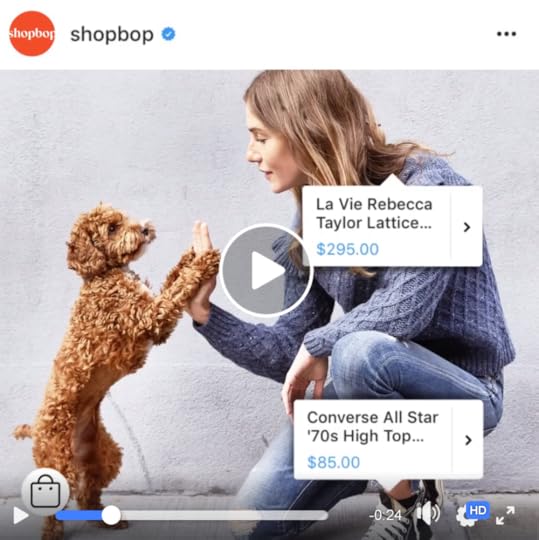
Shopping on Instagram allows people to browse and buy your products seamlessly through the app, or as Instagram puts it, "a visual shopfront to explore new products from businesses they follow."
Your products' prices and details are easily accessible, too. Shoppers can tap on a tagged post within the Instagram feed or through the Shop button on a business profile to take the next steps.
The Benefits for Businesses and ShoppersFor businesses, tagging a product is as simple as tagging a person in a post.For shoppers, a shopping post's tags get rid of the guesswork and allow for easy access to a tagged product's information.Brand success stories so farTYME's traffic from Instagram has increased by 44% since implementing shopping on Instagram.Since its launch, Lulus says Shopping on Instagram can be directly attributed to over 1,200 orders and over 100,000 sessions.Spearmintlove xperienced a 25% increase in traffic and an 8% increase in revenue attributable to Shopping on Instagram.How to Set Up Shopping on Instagram
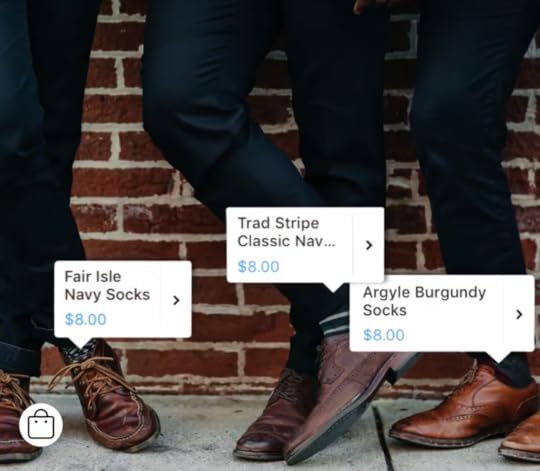
To get your business approved and Shopping On Instagram-ready, there are two main things you need:
Register your Instagram account to a business profile, or convert an existing personal account to a business type (via Instagram Settings)Connect your business profile to a Facebook catalog of products. This can be created and managed on Business Manager, through Shopify or BigCommerce platforms or directly through a Shop section on your business' Facebook Page.In addition, the products you sell must be physical good and comply with Instagram's commerce policies. Basically, nothing illegal or prohibited. Here's the full lowdown on that here.
How to Connect A Facebook Catalog to An Instagram Business ProfileHow you will link your Instagram account to your Facebook catalog will differ slightly depending on where you're selling. Here are the instructions for each of the three options:
Setup Instagram Shop Through Shopify And BigCommerce
If your store's products are hosted on Shopify or BigCommerce, you can can choose to set up a shop on Facebook directly through those platforms. Make sure the Facebook account connected to Shopify and BigCommerce is the same as the account connected to your Instagram business account, and you should be good to go.
Setup Instagram Shop Through the Shop Section on A Facebook Page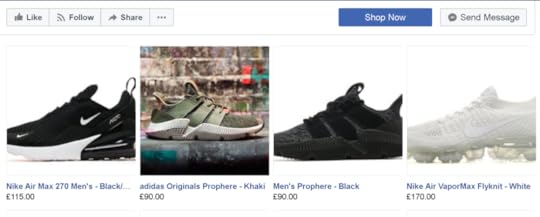
To setup a shop on your Facebook Page, click the Shop tab. If you don't see the Shop tab:
Go to your Page SettingsClick Edit Page in the left columnScroll to the bottom and click Add a TabClick Add Tab next to the Shop tab, then click close.With the shop in place, follow the steps necessary to setup your Facebook Page Shop section fully - payment options, products, etc.
Selling Through the Shop Section via Business ManagerGo to the Business Manager account that owns the Facebook Page linked to your Instagram business account. This won't work if your Business Manager only has access to the Facebook Page. From your Business Manager account, create a new catalog (Settings > People and Assets > Product Catalogs > Add New Product Catalog > Create a New Product) or identify an existing catalog you'd like to use with shopping on Instagram. The Business Manager account must either own or have access to the catalog.How long until my account is approved for Shopping on Instagram?Once you fulfil the requirements for any of the above options, your account will be reviewed for access to Shopping on Instagram. Instagram says the review process should usually take a few days, but sometimes we may take longer.
How to Tag Products in Posts on Instagram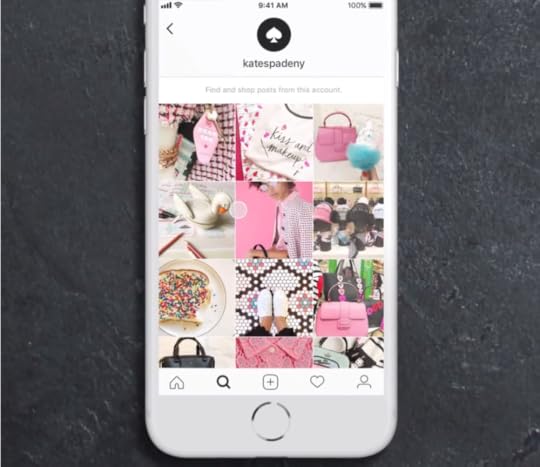
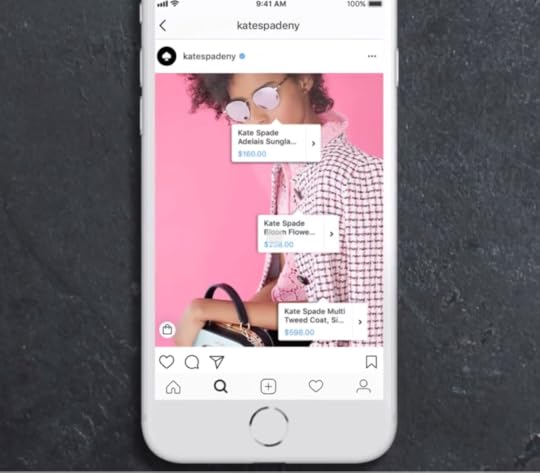
When your Instagram account is approved for creating a shopping experience on your profile, I'm sure you'll be keen to get the feature up and running! Here's how to enable product tagging on Instagram, and how to tag products.
To enable product tagging on Instagram:Tap the profile icon to go to your profileTap the Get Started alert at the top of your profileIf you don't see the alert, tap the Settings cog iconTap ShoppingTap ContinueSelect a product catalog to connect to your business profileTap DoneNote: If you don't see the "Shopping" menu under Business Settings, your account is probably still under review or it hasn't been approved for Shopping on Instagram.
To tag products in your posts:Select a photo and add a caption, effects and filters.Tap Tag Products from the Share screen.Tap the products in the photo you want to tag.Enter the names of the products you want to tag, then select them as they appear in the search box.Tap DoneTap ShareTo preview posts or save a draft of a post, click Preview Tagged Products or Save Draft on the page that allows you to add a caption to your post, under Tag People and Tag Products.
7 Tips for Making the Most of Your Instagram Shop

Create at least 9 shopping posts to activate the Shop tab - that will appear at the top of your profile - for your audience. Tapping it will allow customers to browse through all of the posts that contain product tags.You can tag up to 5 products per single-image post or 20 products per multi-image post.You can tag products in both new and existing posts from your Instagram business profile, so don't forget to return to older posts to capitalise on anyone who stumbles across them in future.Tag multiple products to help your audience explore and browseUse Stories to show your audience that they can now shop your postsMake sure that each tag touches the correct product, so shoppers know which product the tag refers to.Use Insights on your business profile to understand your audience, and use the catalog containing the most relevant currency and language for your audience.Over to you
Will you be setting up Shopping for Instagram on your account? What have your experiences of it been so far? Let me know in the comments below!

Andrew Macarthy is a social media consultant and the author of the #1 Amazon Web Marketing Bestseller, 500 Social Media Marketing Tips.
Buy 500 Social Media Marketing Tips
Amazon US: http://www.amazon.com/dp/B007L50HE6
Amazon UK: http://www.amazon.co.uk/dp/B007L50HE6
Follow Me:
http://www.facebook.com/500socialmediatips/
http://www.pinterest.com/andrewmacarthy
http://www.twitter.com/andrewmacarthy
March 7, 2018
7 Ways to Use Any Holiday to Drive Sales Through Facebook and Instagram (Bloom & Wild Mother's Day Case Study)
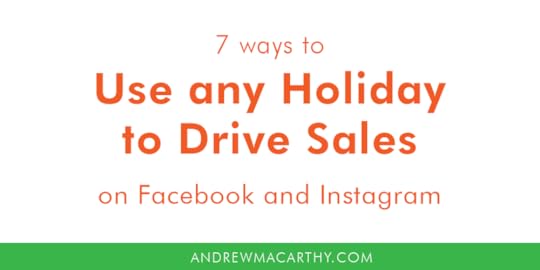
7 Ways to Use Any Holiday to Drive Sales Through Facebook and Instagram (Bloom & Wild Mother's Day Case Study)
I'm really not very good at choosing flowers, let alone describing to a florist what I think the recipient would like. So for Valentine's Day this year, I pinned my hopes on Bloom & Wild - a company that delivers bunches of fresh flowers through your letterbox. Thankfully, they pulled through and my wife loved the bouquet.
I, however, was more interested in their social media marketing. And with Mother's Day coming up here in the UK, I wanted to analyse how they promote what must be one of Wild and Bloom's biggest dates of the year.
In this blog post, I've highlighted - with examples - 7 ways that Wild & Bloom uses Mother's Day to drive sales through social media. The same premise could be adapted and used for almost any brand, so let's take a look.
1. Update your profile branding and biosIt's a relatively small thing, but your cover photo and bio are often the first thing someone will see of your brand. So, if' you're gearing up for a big promotion like Bloom & Wild is for Mother's Day, it can potentially have a big impact:
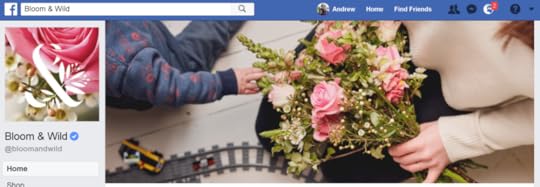
Here, Bloom & Wild hints at the emotions of Mother's Day and the bond between mother and child, by using a child playing with toys, while reaching out to touch one of its bouquets. Wouldn't it be nice, a customer might ask, to have the same interaction on Mother's Day?


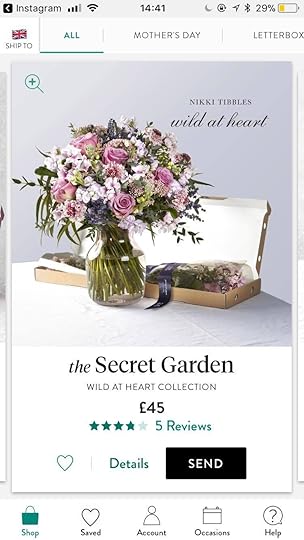
On Instagram, Bloom & Wild is more direct. After a quick intro to spell out who they are and what they do, it clearly reminds people that Mother's Day is approaching and encourages them to click on the link in its bio to "shop the feed." Clicking the link opens the feed's images up in a service called LikeShop. When an image is tapped, the purchase page featuring the product opens ready to buy. "Dash Hudson’s native LikeShop solution takes your audience from engagement on Instagram, to checkout your website in one step. Simple. Beautiful. Dangerous," says the service's website blurb.
2. Run a themed contest; use it to collect emailsBloom and Wild launched a contest, in partnership with Chow Shed, to give away a spa treatment and a year's supply of flowers. While the giveaway does not directly mention Mother's Day, all the signals point to the occasion. They'll want to be targeting entries from people who would like to treat their mothers, and people (mothers included) who want the chance to win an indulgent prize. Running a contest like this - especially at this time of the year, is a smart way to increase the rate of entries.
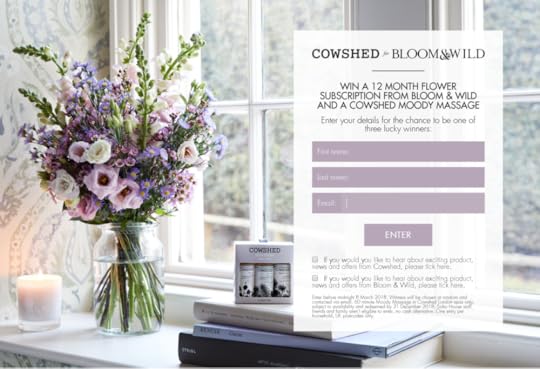
The link (shortened and trackable via bit.ly), leads to a simple entry form asking for name and email address. There's also tick-box options for people to sign up to each company's mailing lists - a smart and subtle way to drive sign-ups.
3. Offer discount codesBloom and Wild offered customers a 15% discount code on flowers in the run up to Mother's Day. Note the clever copy ("we're sending ours this Saturday to impress mum with our planning). With Mother's Day being a Sunday - and more expensive/busy to send on that day, the company, personifying itself, is encouraging customers to purchase early (and also impress their mother!).
Customers know that discount codes don't normally last long, so by offering one at a time like the run-up to Mother's Day, you're signalling an opportunity that cannot be missed.
Make her day: Mother’s Day is looming and we have the answer. Order a bouquet for Saturday and watch them bloom on Sunday: https://t.co/6SHtcibKBg pic.twitter.com/xXpEV2bnte
— Bloom & Wild (@BloomandWild) March 6, 2018
This post works in a similar way, encouraging people to order flowers for the less-busy Saturday, not wanting to risk them not turning up on Sunday. And anyway, they'll need time to bloom from their letterbox packaging, so where's the harm in ordering early? Note also the copy, "make her day." a strong opening statement that burns into the psyche of children of Mother's Day-buying gift age everywhere. No one wants a disappointed mum.
4. Fit the format to the content
The examples I've shown above have included simple text links, and videos - and here's another example of Bloom and Wild mixing up its use of content styles to amplify its message. This particular carousel of images takes customers on the journey of its flowers: packaging a hand-made bouquet, showing it on display in a house, and an invite to click through to the collection on its website.
5. Create a sense of urgencyMake her day this Mother's Day weekend, March 9-11. Only 10 days to go!
A post shared by Bloom & Wild (@bloomandwild) on Mar 1, 2018 at 10:52am PST
Mother's Day is one of those gift-giving occasion that people do not want to mess up, and Bloom and Wild knows it. By reminding customers that there are only a handful of days to go, they create a sense of urgency and anxiety which will encourage people to order. It's a classic marketing trick that brands use all the time. The copy, "Make her day this Mother's Day" is a soft push to creating action, but words like "fast", "hurry," "quick", and "now" might suit your promotion, too.
A post shared by Bloom & Wild (@bloomandwild) on Mar 4, 2018 at 3:37pm PST
As Mother's Day gets closer, there's another reminder. And here, I like the "send mum the unexpected this Mother's Day" message. Many people struggle to find a unique gift for Mother's Day each year, and this post could be the prompt that they need to purchase something memorable. It speaks to the part of a buyer's mind that imagines how their mum will react when she receives the flowers - and the appreciation that will be lavished upon them in return.
6. Play to a heightened emotional stateRemember when? Tell us your favourite memory of mum below and we’ll share our favourites ✨
A post shared by Bloom & Wild (@bloomandwild) on Mar 2, 2018 at 12:53am PST
In this Instagram post, Bloom & Wild asks fans to share memories of their mother and promises to share their favourite. This type of post works on three levels:
It drives engagement, which the Instagram algorithm loves. The more people that comment, the more likely the post is to appear in people's feeds - or in the Top Posts on Instagram.It plays to some of people's most precious and emotional memories, and helps create a tie with the brand. As well as memories from people who's mothers are still around, there are plenty of comments from people sharing memories of a mother that has passed away.The promise that Bloom & Wild will share some of their favourite memories plays to people's subtle, I guess you called call it narcissism, when it comes to social media. You can bet that if Bloom & Wild shares their memory in a post, they'll be letting all their friends know. It's a spot in the limelight for them, but more importantly, drives more attention to Bloom & Wild, and spotlights them as a company that cares about their customers.7. Personalise your brand; give it a human faceJanuary 30, 2018
The Best Totally Free Stock Video Sites To Help You Make Stunning Social Media Videos
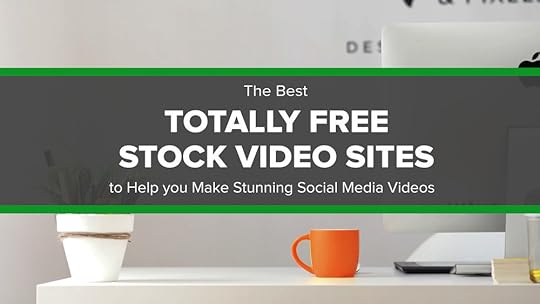
The Best Totally Free Stock Video Sites To Help You Make Stunning Social Media Videos
The Ultimate List of Free Stock Video Websites 2018
Are you looking for free stock video footage to use in your social media videos - Facebook, Instagram, YouTube, etc? In an age where social sites are begging for brands to use video, they're the perfect solution for adding interest to a project rather than a static image, especially if, for whatever reason, you can't get out to record a suitable clip yourself.
Paying for video from traditional stock video websites can get very expensive, very quickly. But, there is an alternative.
There are a surprising number of sites offering totally free stock video footage - the best of which I have compiled below. These are sites that have plenty of free clips available (one hundred or more, and are regularly updated). Every site below has its merits, but I've tried to order them in a way that puts the best options towards to the top of the list.
A Word on Free Stock Video LicensesJust before we get to the list, you need to know about licenses. Public Domain and Creative Commons 0 (CC0) licenses mean that the videos can be used and edited for personal or commercial use without attribution, however you please. Meanwhile, Creative Commons 3.0 licenses vary, depending on the creator's wishes. They almost all require attribution, and may also state additional restrictions such as No Commercial Use.
Before you download and use a piece of footage, double check the license and adhere to it, both as a courtesy to the creator and so that you don't run into problems later on down the line.
Free Stock Video Downloads List 2018Pexels Video
Pexels Videos has hundreds of completely free stock videos available without attribution, searchable by keyword and categorised by type.
Pixabay
Pixabay offers a large amount of free stock videos, searchable by keyword and categorised by type. Scroll to the bottom of the page for the links to browse the videos by category.
Videvo
Videvo offers a ton of free HD stock footage and motion graphics in a wide range of categories, from animals and arts, to sports and science. The site has three main licenses for its videos: one where no attribution is required, another where it is, and one that follows the rules set under Creative Commons 3.0. Filter your search to find only the type you want. If a clip is marked as “Editorial Use Only”, you can not use it for commercial or promotional purposes. Otherwise you are free to use the clip in any project, commercially or non-commercially.
Coverr
Although a site designed specifically to offer videos for use as the background to website homepages, Coverr's clips can work well in plenty of settings. Ordered by category and best of all, "All Videos on Coverr.co can be used for free. You can use them for commercial and noncommercial purposes. You do not need to ask permission from or provide credit to the Videographer or Coverr.co, although it is appreciated when possible."
Distill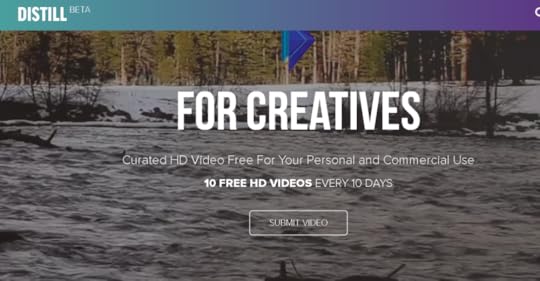
There's isn't a massive amount of free stock videos here yet, but Distill's library is categorised by type and is full of high-quality clips. In exchange for its email address, it offers 10 free HD videos delivered to your inbox every 10 days.
Life of Vids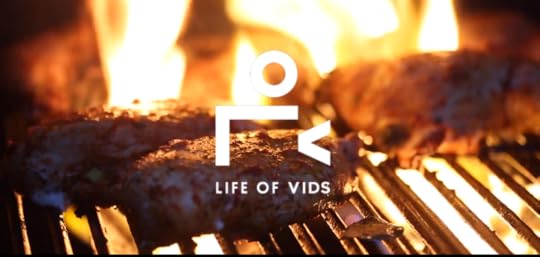
Life of Vids provides hundreds of free stock videos with no copyright restrictions for personal and commercial work. There is no search or categorisation, so you'll have to scroll to see if anything catches your eye. The site states that new videos are added weekly, but the dates on the videos seem to show the upload schedule being a little bit more sporadic. Still, can't be ungrateful!
X Stock Video
X Stock Video has plenty of footage that can be browsed by category. The site says that all footage is "free to download and free to use in a 'Free to view video project' (promotional, event, educational, client, youtube without ads). If you want to use the footage for commercial purposes (a film or television production, commercial app, game, youtube with adds or other software) you can buy an extended License for a small fee."
Free HD Footage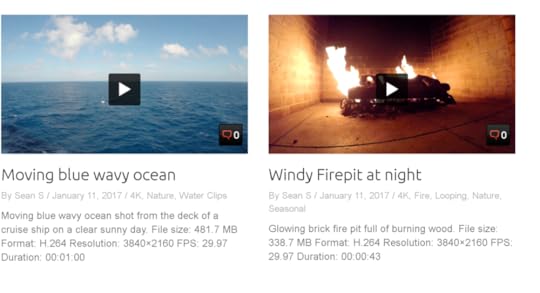
Free HD Footage says its "efforts will continue to focus on building our site with free HD stock footage, for you to use however you’d like." There are over 100 clips so far with more being added over time.
Vidsplay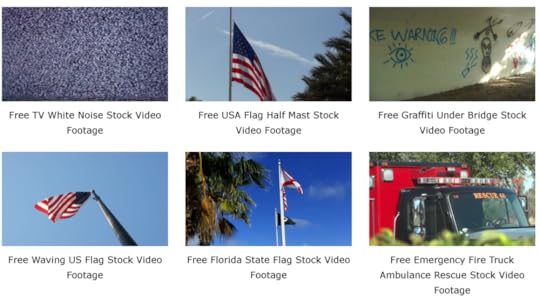
Vidsplay's searchable and categorised stock video footage can be used for both personal and commercial projects for free. The only requirement is that you visibly add a credit link to Vidsplay.com somewhere on your website, ending credits of your video production or in the description for online media channels (such as Youtube, Vimeo..etc.)
Stock Footage 4 Free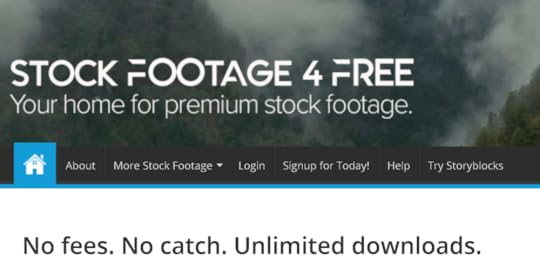
Stock Footage 4 Free says "There are never any fees for using our footage. Our footage comes with a 100% royalty free license allowing you to use the footage in all types of productions, for worldwide distribution, forever." There are hundreds of clips available, but no search or categorisation, so you'll have to browse through until you find a clip you like.
Wavebreak Media
Wavebreak Media offers a small handful of its stock footage clips as a free download, with a new giveaway available every month. Might be one to bookmark and check on every now and again.
Videezy
Videezy has a large library of free video clips available to search and browse by category. Clips have a variety of licenses, so do check before downloading. Also, watch out for the videos marked "Pro" in search results - they're not free!
Pond5
Pond5 mostly caters to people looking for paid video content, but also hosts a significant amount of Public Domain (free) footage. Great if you're looking for old stock footage.
Clipcanvas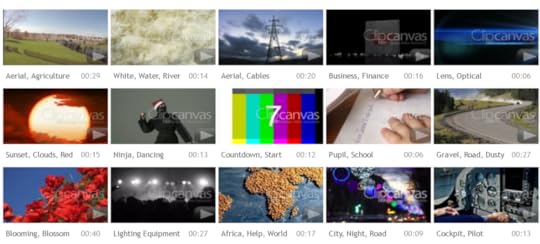
Clipcanvas provides nearly 170 free stock footage video clips. They're not searchable or categorised, but the small thumbnails make them easy to browse. Also, you'll need to register (free) in order to download any videos.
Cute Stock Footage
Cute Stock Footage is the work of two friends, Michal and Chris, offering lots of free stock footage for free - categorised by type. "You are allowed to use this material in your commercial or non-commercial projects such as: video games, films, videos, documentaries, presentations, animations, music, stage plays, radio plays, audio books, apps," they say.
Flickr
Flickr allows users to license their work under creative commons, including video. All the videos require attribution, but the advanced search function allows you to search for videos, and specify results that can be used for commercial use.
Over to youWhat are your favourite free stock video sites? Have any missed any you'd like me to add to the list? Let me know in the comments below!

Andrew Macarthy is a social media consultant and the author of the #1 Amazon Web Marketing Bestseller, 500 Social Media Marketing Tips.
Buy 500 Social Media Marketing Tips
Amazon US: http://www.amazon.com/dp/B007L50HE6
Amazon UK: http://www.amazon.co.uk/dp/B007L50HE6
Follow Me:
http://www.facebook.com/500socialmediatips/
http://www.pinterest.com/andrewmacarthy
http://www.twitter.com/andrewmacarthy
January 23, 2018
How to Create Profitable Facebook Mobile Video Ads for Every Placement (News Feed, Pre-Roll, Mid-Roll, Canvas)
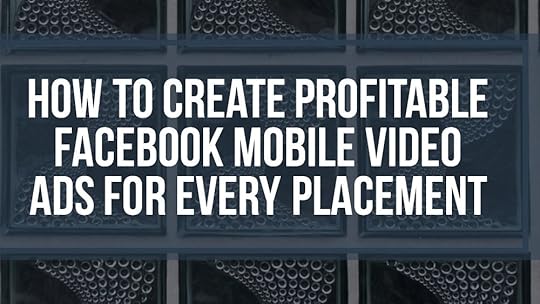
How to Create Profitable Facebook Mobile Video Ads for Every Placement (News Feed, Pre-Roll, Mid-Roll, Canvas)
Why Brands Can No Longer Ignore Facebook Mobile Video Ads
Mobile is fast becoming the primary media consumption device, and people people are watching for longer - especially on Facebook. More than 100 million hours of video are watched on Facebook every day, so video ads now give businesses the potential to reach a huge audience. Amazingly, US mobile ad spend is projected to grow to overtake TV ad spend during 2019.
To give you a sense of the impact of mobile content (including ads) on Facebook, the site says that it takes people just 1.7 seconds to consume mobile content on Facebook, compared to 2.5 seconds on desktop, and that people report recalling mobile feed content after seeing it for just a quarter of a second.
Unlike TV where the majority of commercials are still 30-seconds long and non-skippable, mobile video ads appear in a variety of skippable and non-skippable formats on Facebook: in the News Feed, and before and during videos.
The challenge for businesses, then, is how to create mobile video ads that generate the best return, wherever they are placed. In this blog post, I will cover the three main video ads types on Facebook, highlight their benefits, and offer some key techniques for helping you to succeed with each.
News Feed Mobile AdsWhen a mobile video ad appears in the News Feed on Facebook, it is not alone - it has to compete with all of the other content around it. Despite this, a News Feed ad that grabs someone's attention can persuade them to stop and watch for a significant duration (especially if the video is on the longer side). The result is a better-engaged viewer, hopefully one more connected to your brand, and ready to take action on whatever the ad wants them to do.
Key Strategies for Mobile News Feed Ads
Create mobile ads for feeds that grab attention in the first few seconds and encourages the viewer to stick around. People have total control over what content they watch and for how long in the News Feed, so the faster you communicate your message in a video ad, the better. For example, begin with stunning shots of your products and vivid backgrounds.People's mobile device volume is often off as they scroll, so better if the message can be communicated without sound (or with captions). Internal tests from Facebook show that captioned video ads increase video view time by an average of 12%.Don't forget to think about the video thumbnail image and video title. As people scroll their feeds, brand colours, themes and imagery can help people connect the video to your brand.Similar creative could apply to News Feed ads that, when tapped, convert mobile full-screen Canvas ads, which include additional information and visuals. Pre-roll Mid-roll adsPre-roll ads play before a Facebook video starts, and mid-roll ads plays a minimum of 20 seconds into the video. Depending on your ad objective and placement, they can be as short as 15 seconds or as long as 115 seconds.
And since these ads appear during content that a person has chosen to watch (and wants to continue watching), in-stream ads tend to get high completion rates, making them particularly useful for advertisers who need to deliver longer or more complex messages. Facebook's internal reporting shows that more than 70% of in-stream video ads are viewed to completion.
Key Strategies for Effective Pre-roll or Mid-roll Ads
Since viewers will often be in a watching mood with their volumes up, ads with sound work well when placed within video streams. In fact, one of the many strict guidelines for in-stream video ads on Facebook is that they have to have sound.Drop-offs and annoyance grow with ad length, and since no ads is un-skippable anymore (all a user has to do is look away, even if an ad is "un-skippable"), 6-second and 15-second ads are emerging as cross-platform standards.Consider how you can creatively structure an ad to work for those who only watch for 6-seconds and for the smaller percentage of people who will watch for longer. For short pre-roll ads, keep in mind that a lot of viewers have trained themselves to look for and tap the "skip" button as soon as possible, so their attention may be even harder to grab.Canvas AdsAlthough Canvas ad content is a mixture of formats (images and text in addition to video), the fact that its content loads and displays almost instantly within Facebook makes the inclusion of video appealing, so I thought it worth mentioning here - especially given Canvas' mobile-first outlook.
When people click on the photo, video, carousel, slideshow, or collection ad within their mobile News Feed, Canvas opens up a rich, fullscreen experience inside of Facebook where they can interact with the content.
Key Strategies for Effective Canvas Ads
Hook people in with a strong ad (like a News Feed example described above) that gives them a reason to tap to see Canvas content.
Canvases that only a single video or image get less attention compared to longer Canvases that mix 5-7 components. Use compelling headlines and succinct copy to guide people along. Words can help break up your Canvas into consumable sections.
People might not reach the end of your Canvas before leaving, so highlight your strongest points early or throughout the Canvas to keep them interested.
Over to youHow will mobile video ads fit into your strategy now or in the future? Whether you're already experimenting with them or just looking into it, it's an area of opportunity that brands, particularly given Facebook's preference for video content, can't ignore. I'll finish with this, from Facebook itself:
"By playing with new ad formats and creative types, testing new approaches and, most importantly, putting mobile at the center of our strategies, we can find new and better ways to inspire people to stop, look, feel, share, do and buy."
Let me know your thoughts in the comments!

Andrew Macarthy is a social media consultant and the author of the #1 Amazon Web Marketing Bestseller, 500 Social Media Marketing Tips.
Buy 500 Social Media Marketing Tips
Amazon US: http://www.amazon.com/dp/B007L50HE6
Amazon UK: http://www.amazon.co.uk/dp/B007L50HE6
Follow Me:
http://www.facebook.com/500socialmediatips/
http://www.pinterest.com/andrewmacarthy
http://www.twitter.com/andrewmacarthy
January 12, 2018
5 Things Every Brand Must Now Do To Survive and Thrive on Facebook in 2018
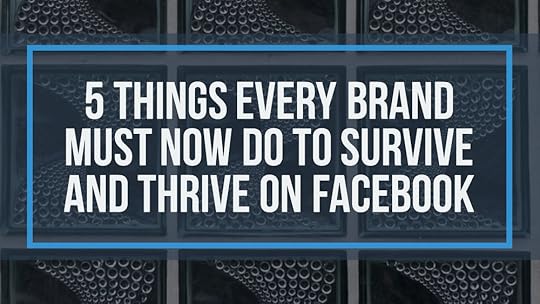
5 Things Every Brand Must Now Do To Survive and Thrive on Facebook in 2018
On January 11, 2018, Facebook CEO Mark Zuckerberg announced a major change to the Facebook News Feed, one that has a far-reaching impact on brands and businesses who use the site to interact with and reach new customers.
In this blog post, I'll explain what's going on and how you can adapt to survive and thrive on Facebook in 2018.
What's happening to Facebook?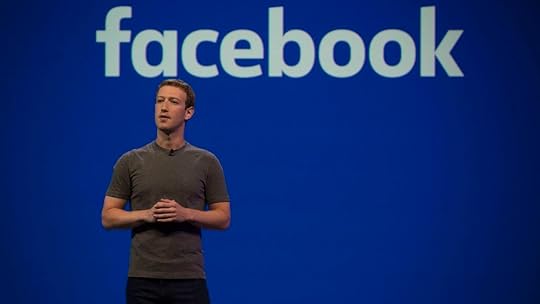
In a nutshell, Facebook is going to be shifting the focus of what people see in their News Feeds back toward posts from friends and family and away from businesses and media outlets.
Facebook's fundamental goal will change - rather than focusing on helping people find relevant content, it will shift to helping people have more meaningful social interactions.
Acknowledging that Facebook's original goal was to help people stay connected and feel closer together, Zuckerberg wrote in a statement on his Page that "public content -- posts from businesses, brands and media -- is crowding out the personal moments that lead us to connect more with each other."
He added:
"Video and other public content have exploded on Facebook in the past couple of years. Since there's more public content than posts from your friends and family, the balance of what's in News Feed has shifted away from the most important thing Facebook can do -- help us connect with each other."
In the words of Shira Ovide of Bloomberg, "the company is reprogramming its computers to prioritize posts on which people feel compelled to interact in a rich way, by writing a long reply to a grieving family member, for example, or by having a back-and-forth with friends about a wacky local TV news story."
As a result of the changes, Zuckerberg expects people to spend less time on Facebook, and "some measures of engagement" (like reach and referral traffic for Pages) to go down.
The changes will take several months to roll out, but Zuckerberg says that people will eventually see less public content like posts from businesses, and more from friends, family, and groups.
How bad is this for businesses and brands?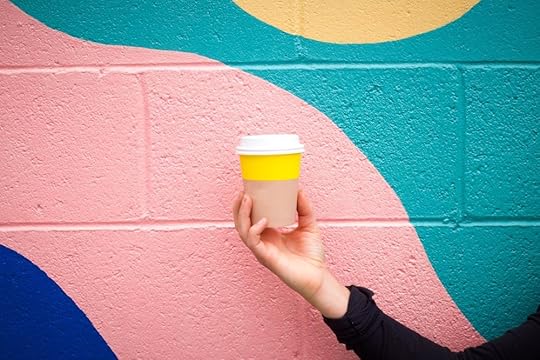
Not going to sugar coat it, it's not positive news... but not unexpected - and there is a silver lining for those businesses willing to work at it. Facebook has been slowly moving in this direction for years, with several News Feed algorithm updates to help weed out certain types of "poor quality" content from brands, like click-bait and engagement-baiting.
The truth is that Facebook became riddled with poor quality content that was ruining many users' experiences, and it needed to do something to tidy things up.
Here's the good news: I predict that creators of high quality content will continue to do well on Facebook. Reacting to the news, James Whatley, planning partner of Ogilvy UK summed up the situation well, saying, "If you’re a publisher that consistently publishes interesting and stimulating content, then you’re golden."
This latest change to the News Feed algorithm is not the end of the world. For businesses big and small - not for the first time - it means that we have to adapt and adjust to Facebook's new direction if we are to use the social network as a way to reach customers.
So, what do we need to do?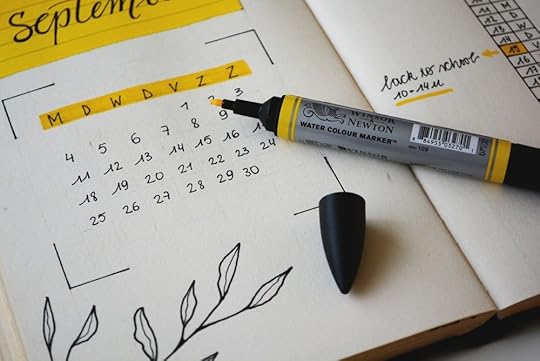
One thing is clear: most brands won't just up and leave Facebook. Its 2 billion users and hyper-targeted ad platform still make it a prime destination online, in spite of this news. In reading Zuckerberg's statement in full and studying the direction that Facebook has been heading for the past couple of years, there are plenty of clues for brands to see where they need to be heading.
Here's what some of the strategies your brand should implement to help you stay on top of your Facebook game:
1. Grow a real community of fansIn another line from Zuckerberg's message, he wrote:
"The public content you see more will be held to the same standard [as that from individuals] -- it should encourage meaningful interactions between people." If we take this as meaning that Facebook will prioritise feel good, personal and local stories, then it seems wise that brands will need to shift their marketing to fit within these confines - the type of stuff that generates conversation amongst groups and peers, rather than simple, throwaway pieces of content.
Some brands will find this easier to do than others, but the rewards for those that do will likely be worth the effort.
2. Provide value-filled contentAs businesses, social media has provided the opportunity to reach a large audience like never before, and plenty of us are guilty of chasing numbers rather than providing what people really want - meaningful content, filled with value. As businesses, we need to re-focus on the audience, the customer, the user and deliver what they really want.
If you're caught in the trap of chasing reach, think about switching your metrics to focus on relevance - content that drives some of the values that I mentioned in point 1 above: genuine interactions, community, and a stronger bond between you and your customers.
3. Create more video content (especially live)The rise of video on Facebook has been astronomic, and it's no secret that Facebook prioritises video content in the News Feed. Whether it's pre-recorded or - even better - live, Pages must make video content a feature in their Facebook marketing strategy. In addition, if this video content is posted regularly and drives community engagement, you'll be doing just what the algorithm wants. Consider this line from Zuckerberg's message:
"We've seen people interact way more around live videos than regular ones. Some news helps start conversations on important issues. But too often today, watching video, reading news or getting a page update is just a passive experience."
In a non-direct way, it's saying "create video, especially live, and get people talking about it."
4. Experiment with MessengerOne of the biggest trends predicted for social media marketing in 2018 is the rise of one-to-one interaction, particularly through chat apps like Messenger.
If Facebook's News Feed algorithms mean you're not going to be able to reach as many potential customers as before, those that you do reach, it's even more important to provide a stellar customer service experience. Messenger is perfect for this, given its immediacy and how personal the interaction is.
Think about the ways you can serve customers through Messenger and how you can drive them to use it. As well as a button at the top of your Page, for example, Facebook introduced click-to-Messenger Facebook ads in November 2016 , and click-to-Messenger ads debuted on Instagram in May 2017.
5. Implement a paid strategyThis is another one that me and every other social media marketing consultant has been shouting about for years. Very rarely can businesses rely on organic reach to reach their desired audience on Facebook, at least not to their full potential. There's plenty of anecdotal evidence out that to prove that Facebook is continuing to throttle organic reach in the News Feed, and this latest announcement probably won't help matters.
No business will have been able to ignore Facebook's prompts to boost a post or promote a Page, and the evidence shows - for those that are savvy, patient, and willing to experiment - Facebook advertising can be extremely lucrative.
Over to youFor brands that rely on Facebook to generate business, life is about to get harder. However, with less noise from other brands finding the key to unlock the interest of those Facebook users just got a lot more valuable.

Andrew Macarthy is a social media consultant and the author of the #1 Amazon Web Marketing Bestseller, 500 Social Media Marketing Tips.
Buy 500 Social Media Marketing Tips
Amazon US: http://www.amazon.com/dp/B007L50HE6
Amazon UK: http://www.amazon.co.uk/dp/B007L50HE6
Follow Me:
http://www.facebook.com/500socialmediatips/
http://www.pinterest.com/andrewmacarthy
http://www.twitter.com/andrewmacarthy
December 13, 2017
How to Combine Instagram Stories Highlights And Story Links to Increase Conversions

How to Combine Instagram Stories Highlights And Story Links to Increase Conversions
In December 2017, Instagram rolled out Stories Highlights and Stories Archive - two new tools that allow users to hold on to their favourite memories from Instagram Stories. These new pair of features, combined, offer up precious new opportunities for brands to promote their content and attract new customers. In this post, I'll explain just how to do it, but first, here's a brief rundown of both:
Stories Highlights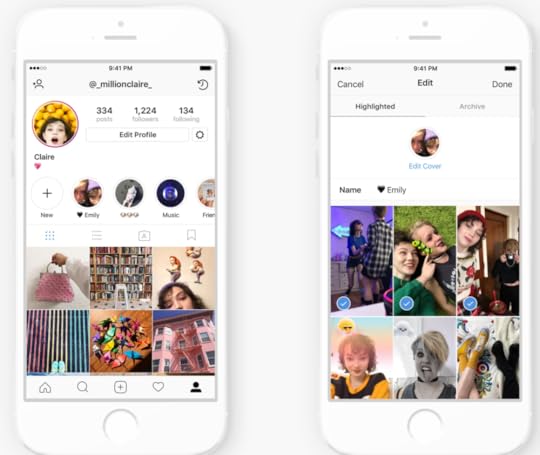
To showcase story content that would otherwise disappear after 24 hours, Stories Highlights allows you to group stories you’ve shared into highlights and feature them on your profile. Highlights stay on your profile until you remove them, and you can have as many highlights as you’d like. To edit or remove a highlight, just tap and hold that highlight on your profile.
As Instagram explains: "Stories Highlights appear in a new section on your profile below your bio. To create a highlight, tap the “New” circle at the far left. From there, you can choose any stories from your archive, select a cover for your highlight and give it a name. Once you’re done, your highlight will appear as a circle on your profile that plays as a stand-alone story when someone taps it. "
Stories Archive
To prevent our stories from disappearing forever when they expire, all Instagram stories now automatically save to your Stories Archive when its 24 hours is up. This makes it easy for you to revisit your favorite moments later on or bring them back to life in a highlight.
"To access the stories in your archive, tap the Archive icon on your profile. From there, you can easily switch between your Posts Archive and your new Stories Archive. In your Stories Archive, your stories will appear in a grid with the most recent stories at the bottom. The first story from each day will show a date indicator to help you navigate your archive as you scroll."
Tap on any story in your archive to watch it and, from there, you can add it to your story, share it as a post or add it to a highlight on your profile. Only you can see your archived stories.
Here comes the most interesting part, especially for businesses:
Now, with Story Archive and Stories Highlights, your brand can re-surface the most popular parts of a previous story, showcasing it to your audience as a "new" post - with promotional links included.
You can share a story from your Stories Archive in a direct message or to your story. To share a story from your Stories Archive:
Go to your profile and tap the Archive (clock) icon.Tap the story you want to share.Tap Share at the bottom of the screen.Tap Your Story or choose the people you want to share it with, then follow the on-screen instructions to finish sharing your story.You can add stories to appear on your profile as highlights, even after they disappear. Highlights appear below your profile photo. To add a story to a highlight:
Go to your profile and tap below Stories Highlights.Tap to select the story or stories you want to add to highlights, then tap Next.Choose a cover photo and enter a story name for your highlight, then tap Add. You can add more photos or videos to your highlight at any time by tapping Edit Highlight.Other ideas for combining stories and highlights include:
Drive web traffic if you have the “Swipe Up” tap-to-view-a-link feature. Users who visits your profile will see the highlight at the top and hopefully tap to view it.Re-cap the best bits of an event or occasion held by your company.Create round-ups of company or industry news, and other topics that interest your audience. Over to youWhat ideas do you have for making the most of Instagram Highlights and Archive for your business? Let me know in the comments below!

Andrew Macarthy is a social media consultant and the author of the #1 Amazon Web Marketing Bestseller, 500 Social Media Marketing Tips.
Buy 500 Social Media Marketing Tips
Amazon US: http://www.amazon.com/dp/B007L50HE6
Amazon UK: http://www.amazon.co.uk/dp/B007L50HE6
Follow Me:
http://www.facebook.com/500socialmediatips/
http://www.pinterest.com/andrewmacarthy
http://www.twitter.com/andrewmacarthy



